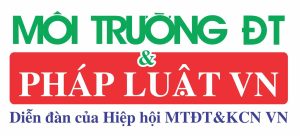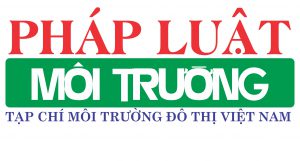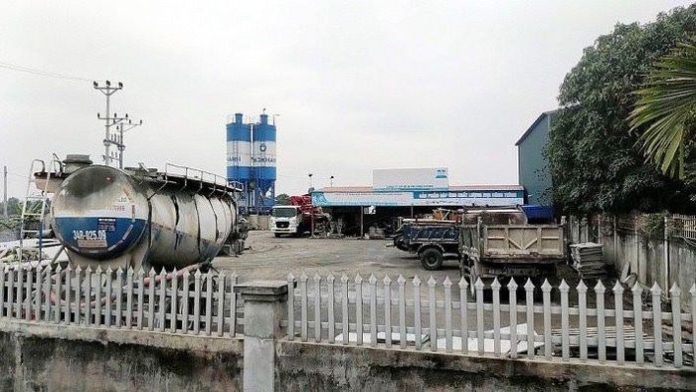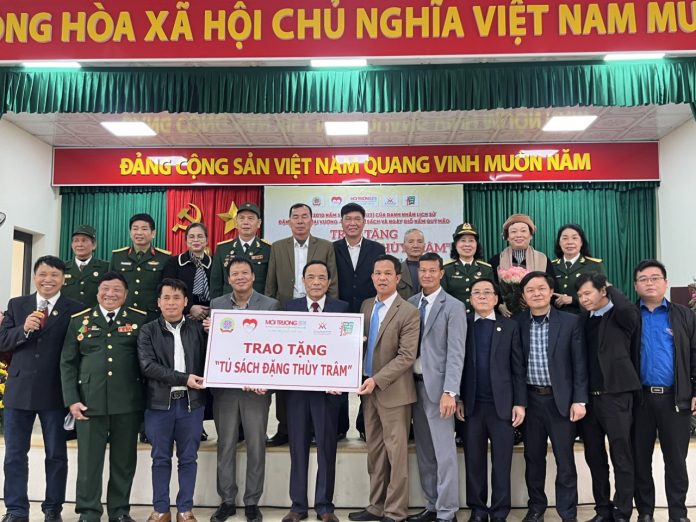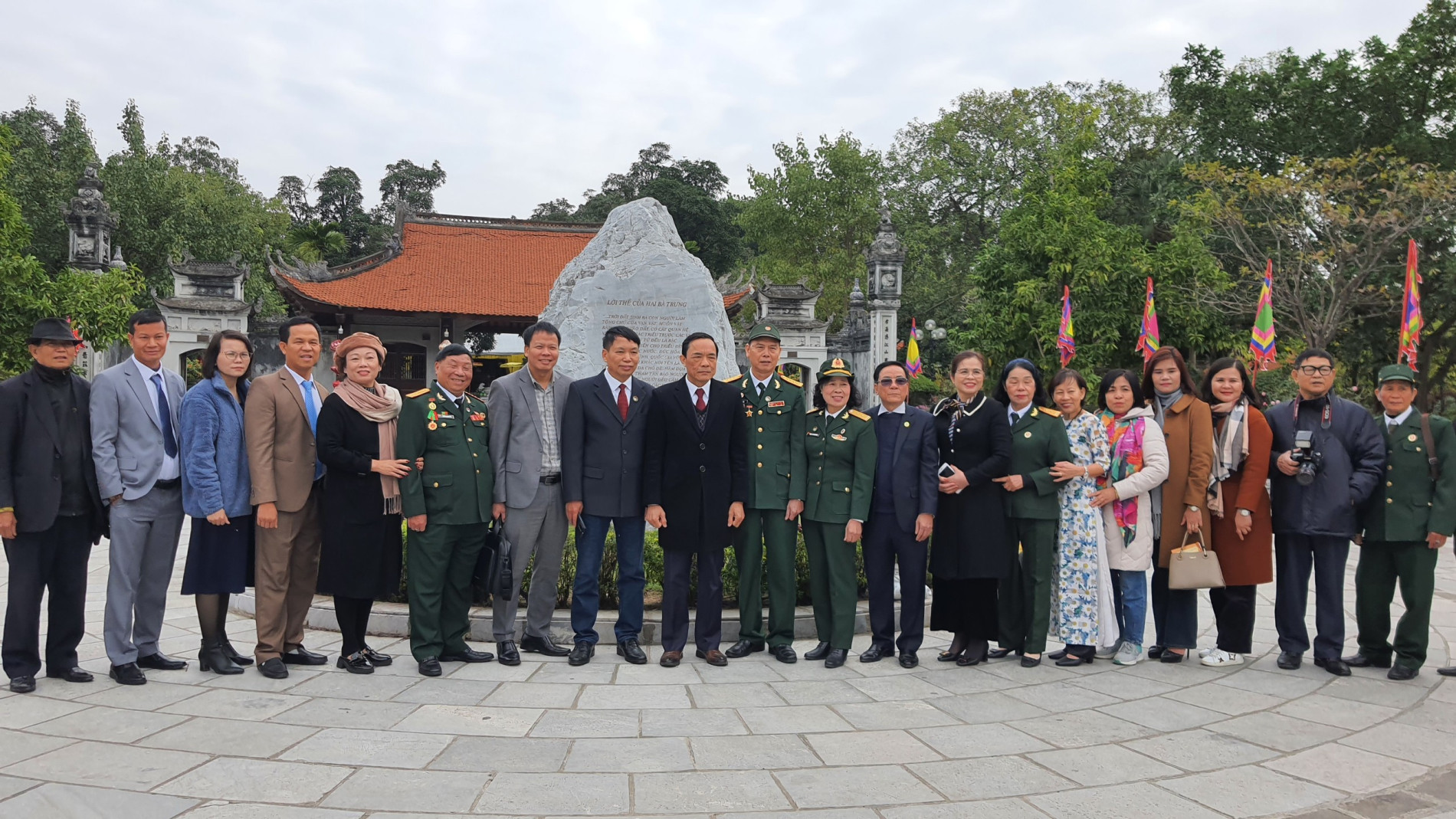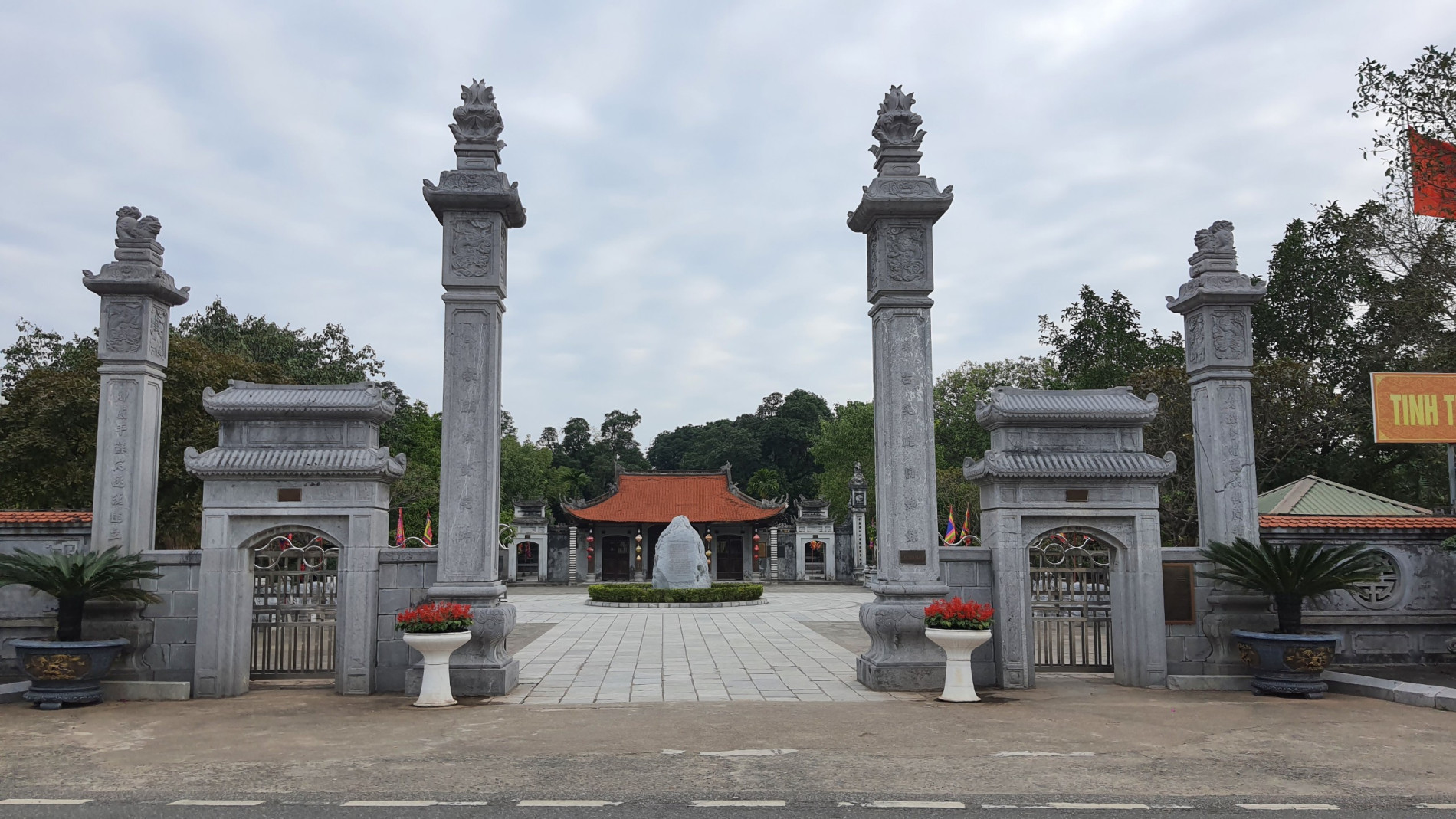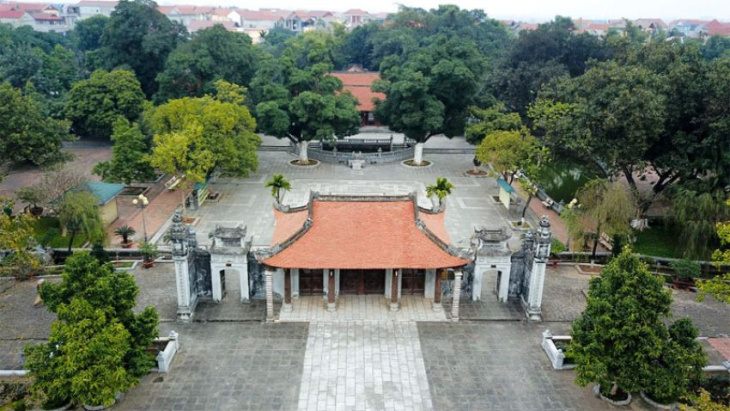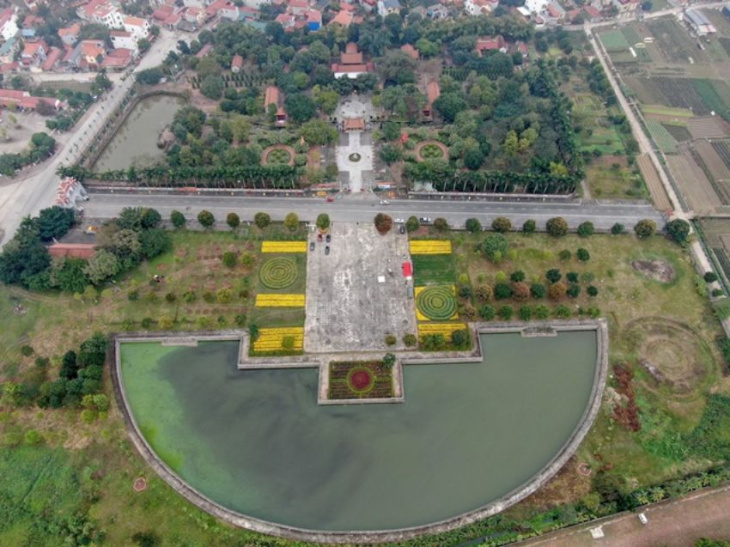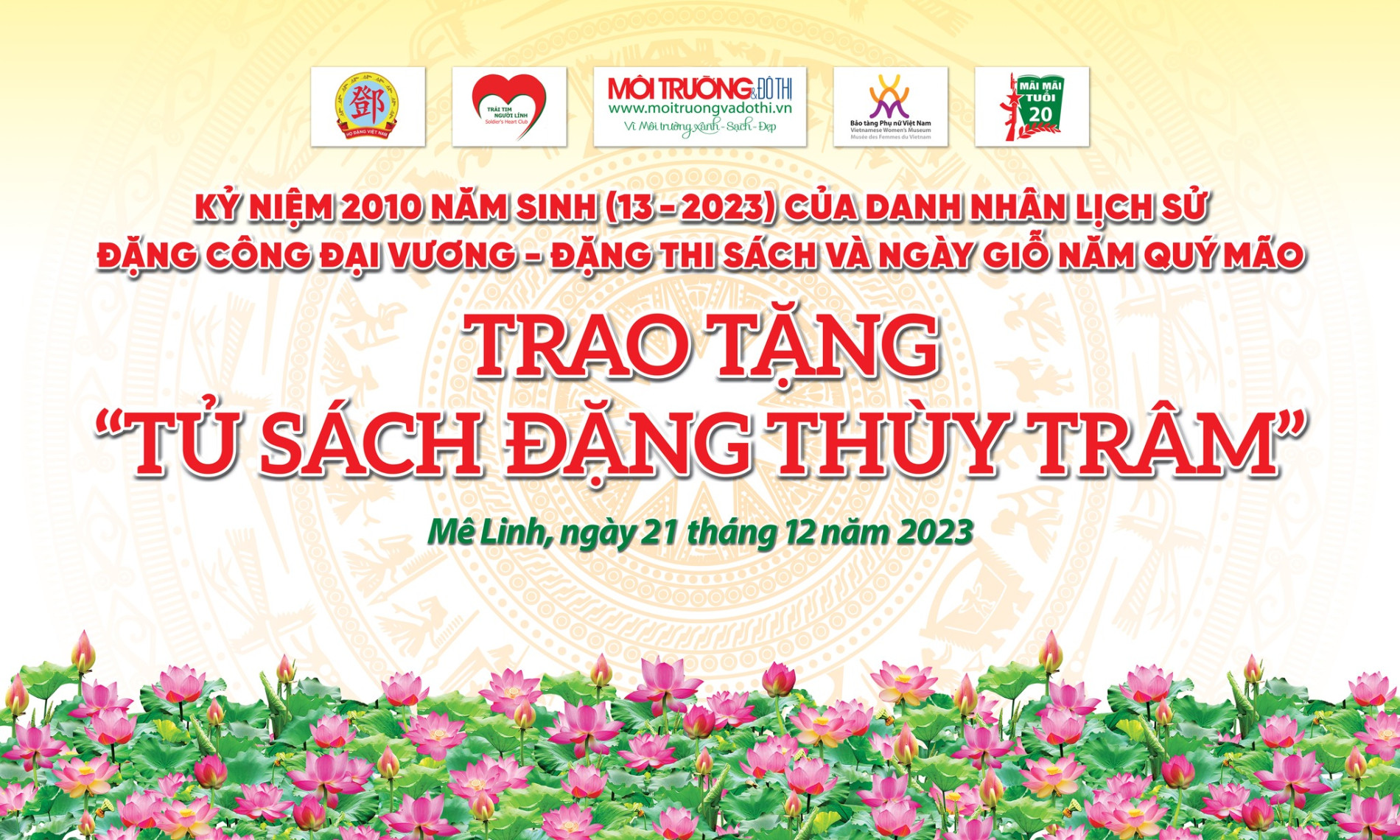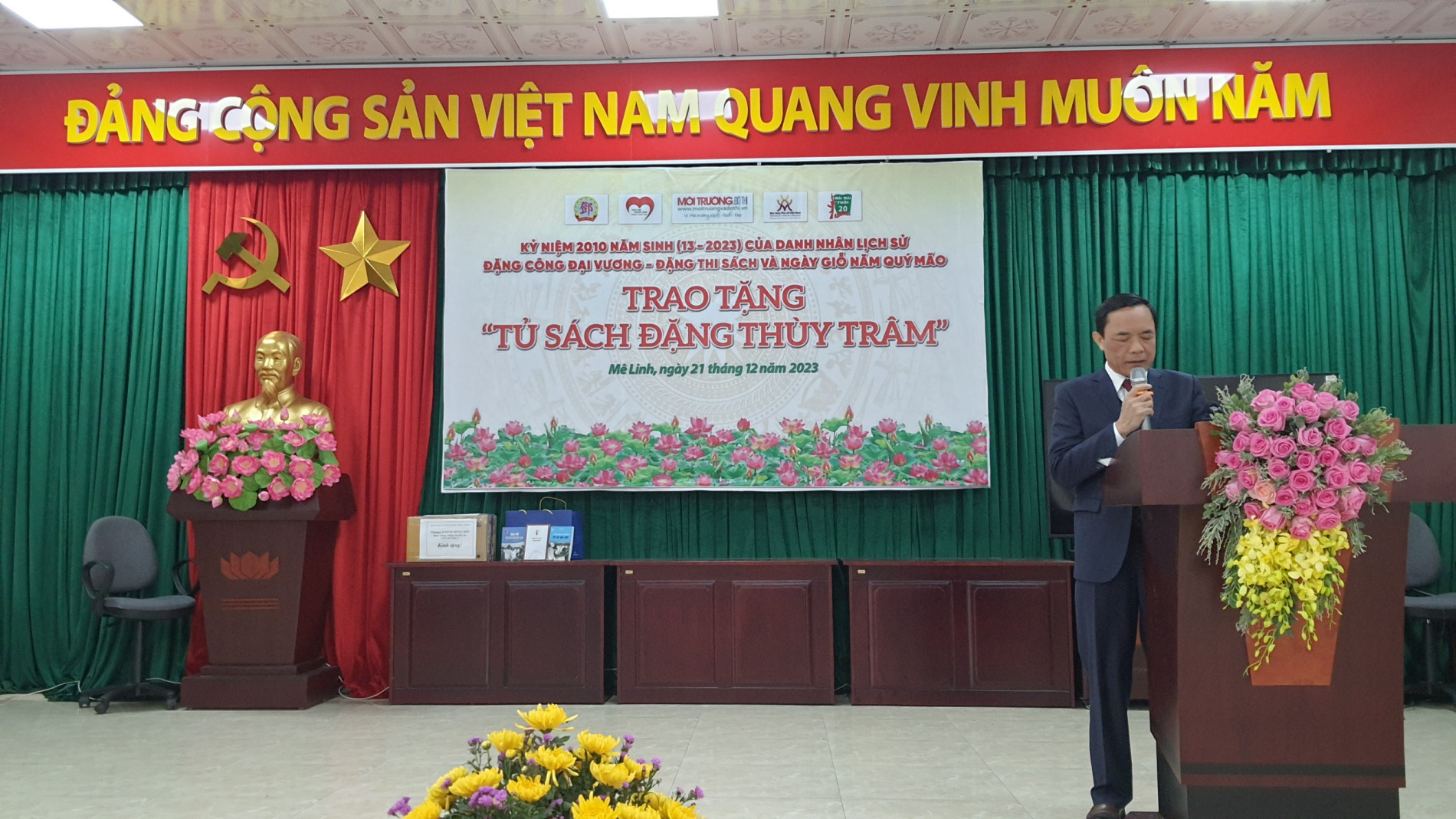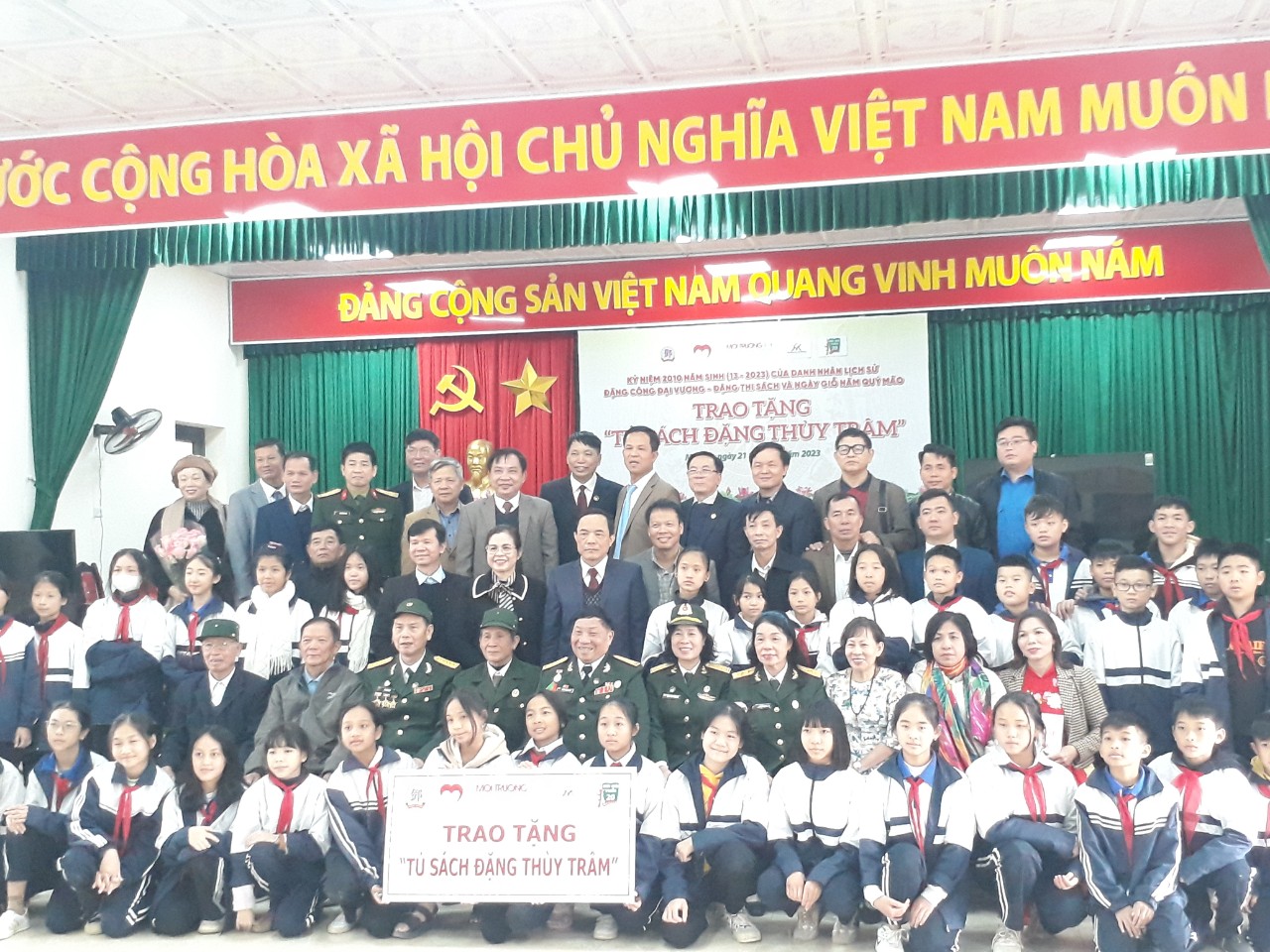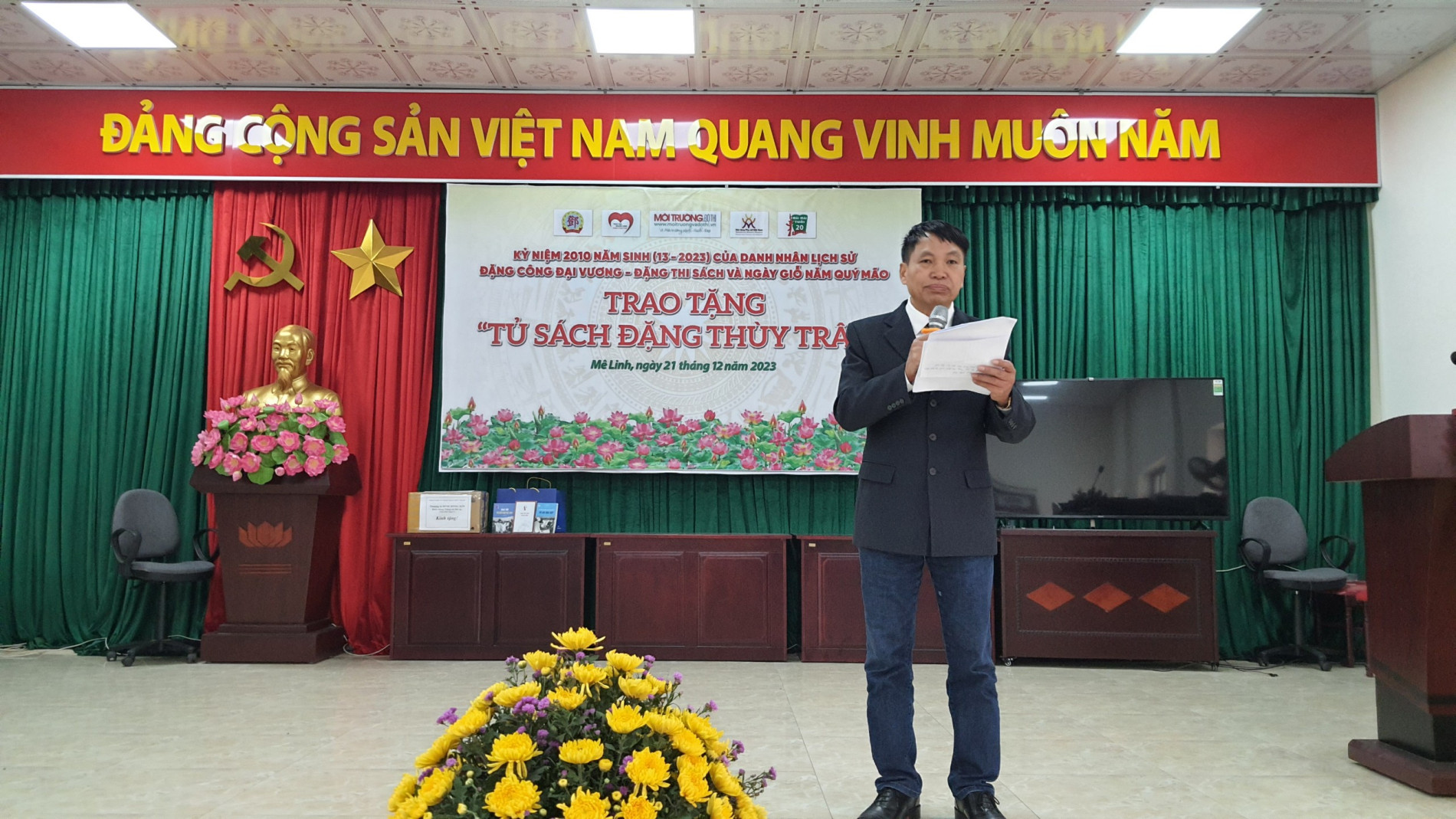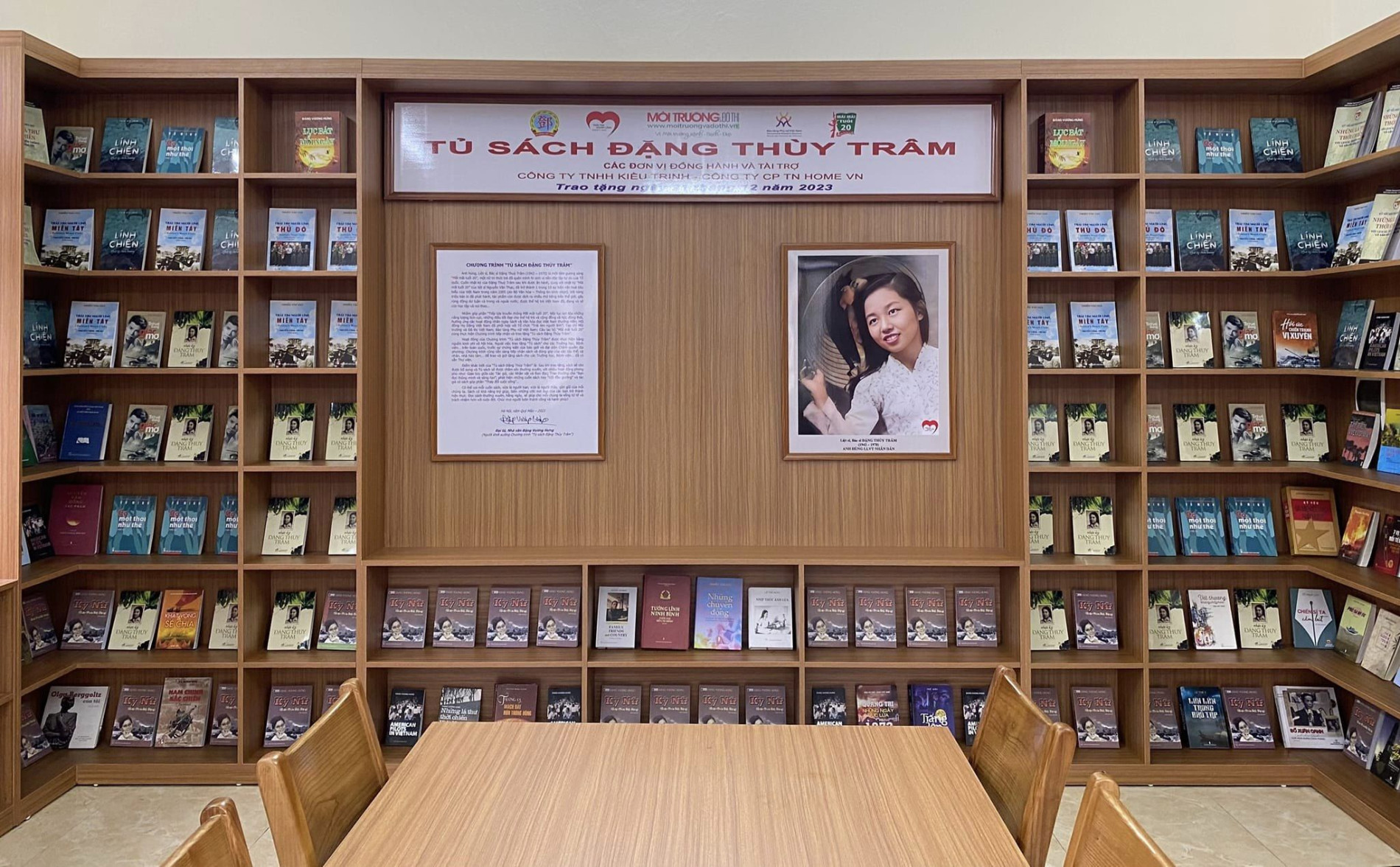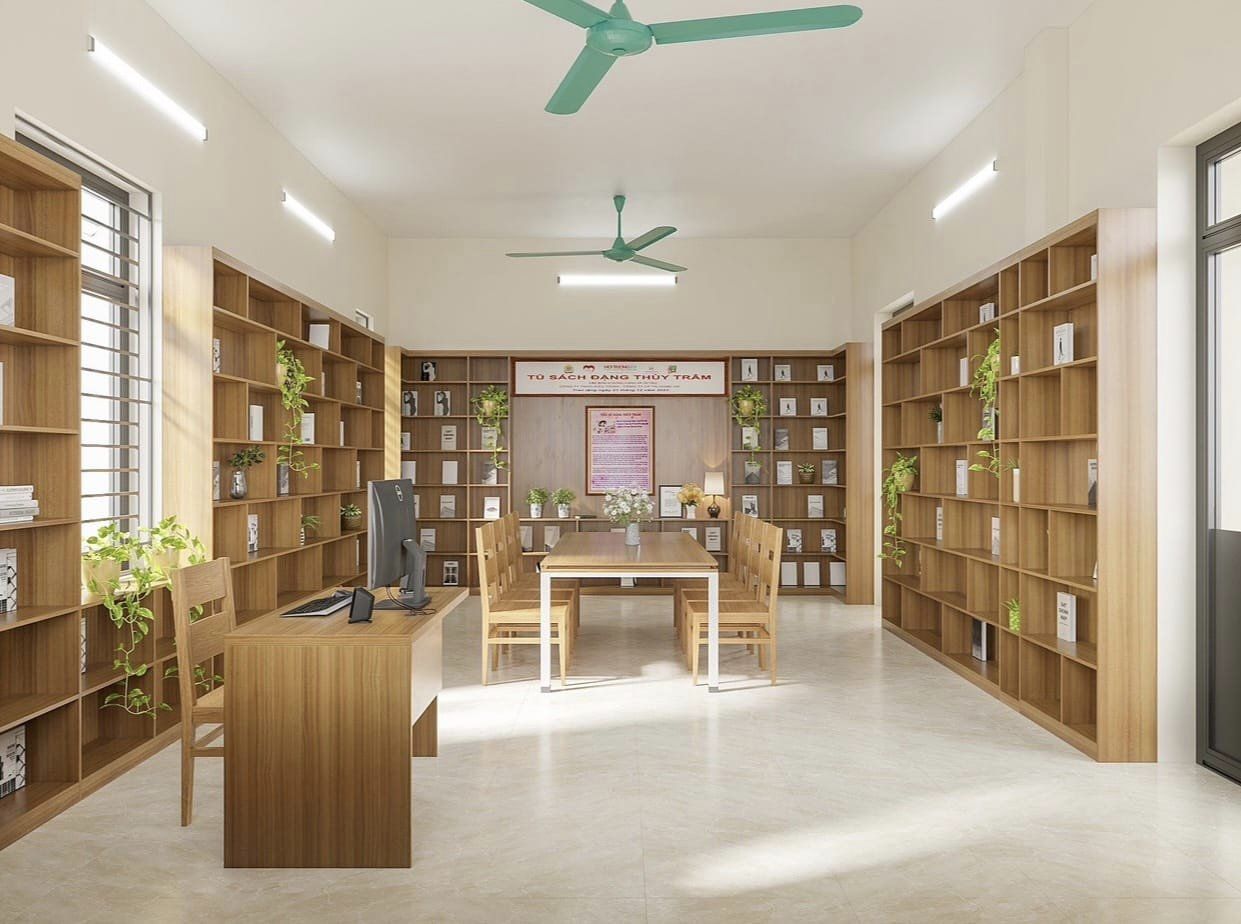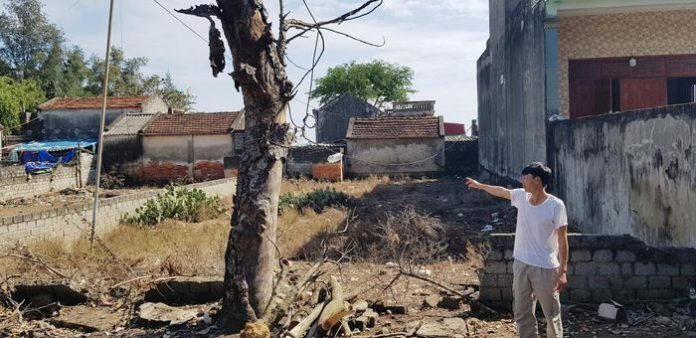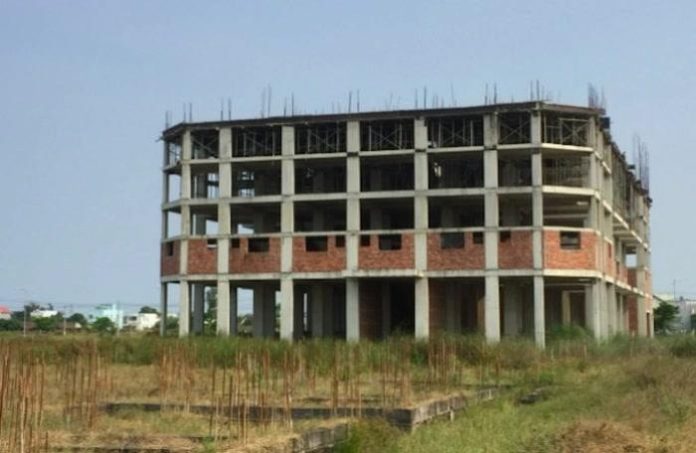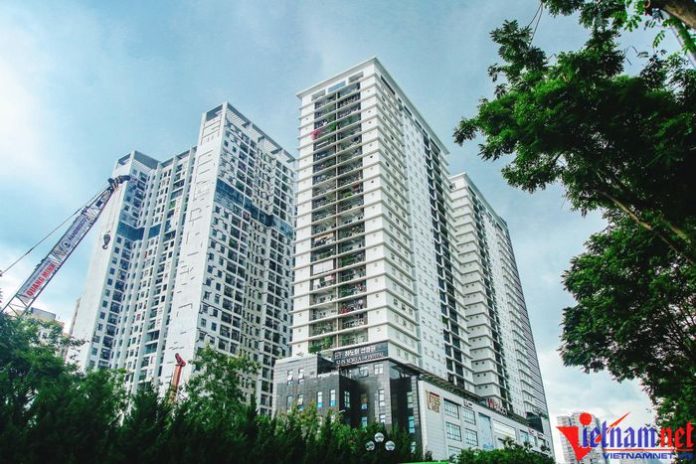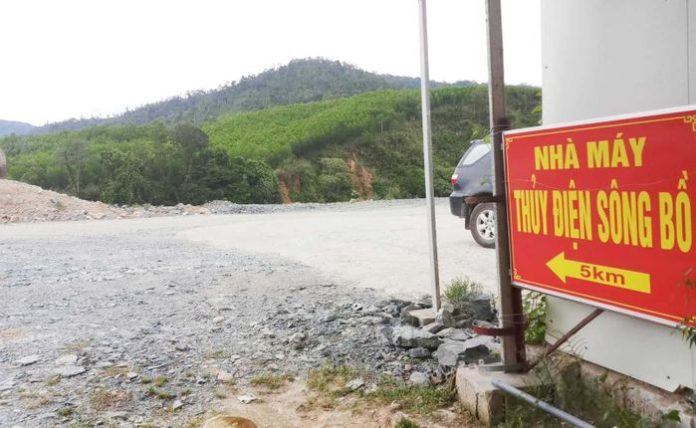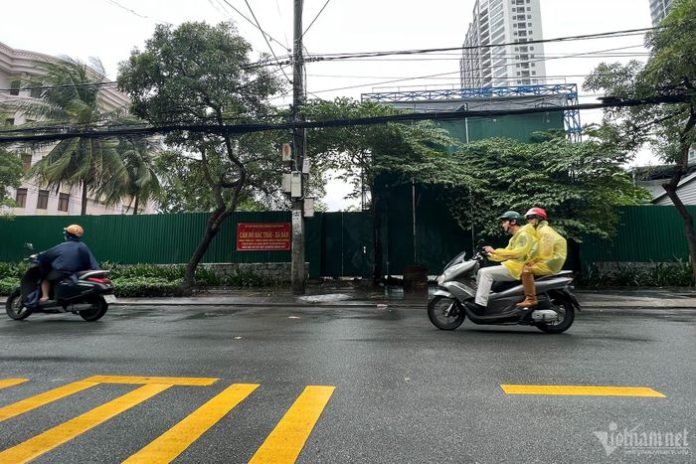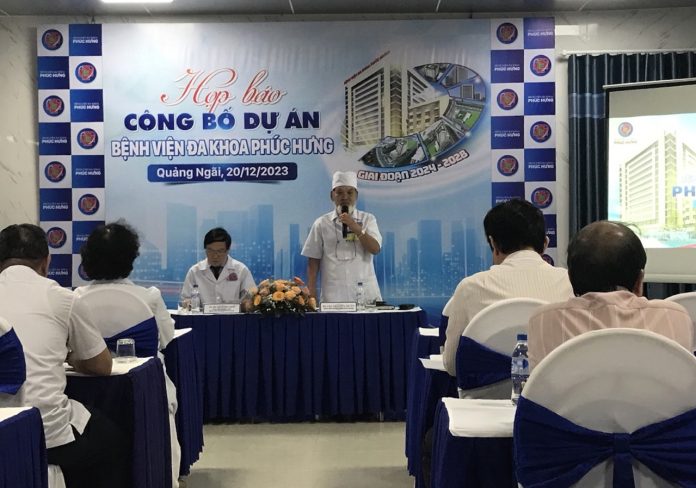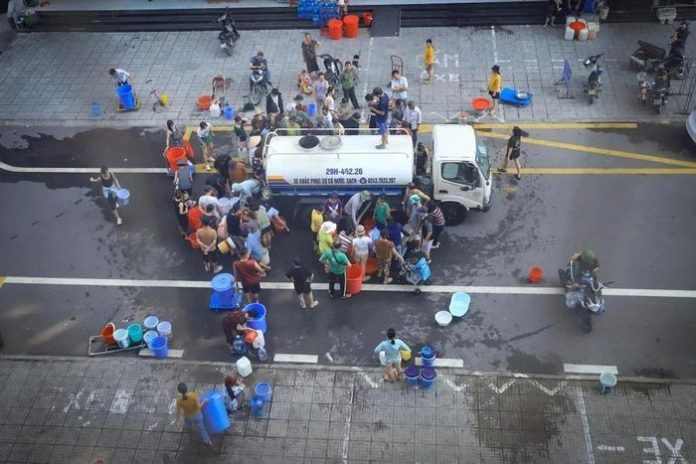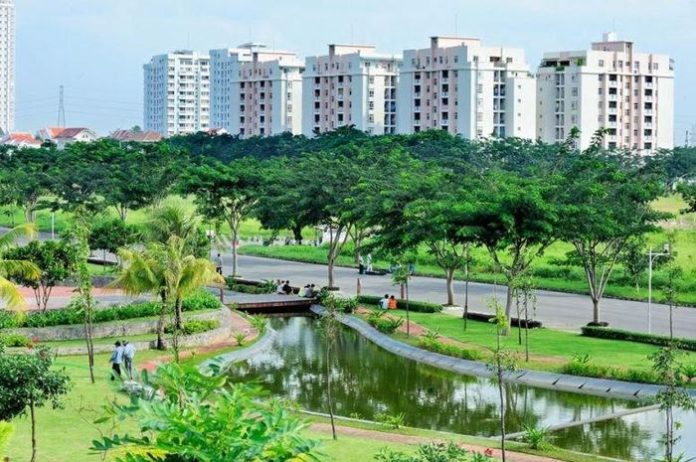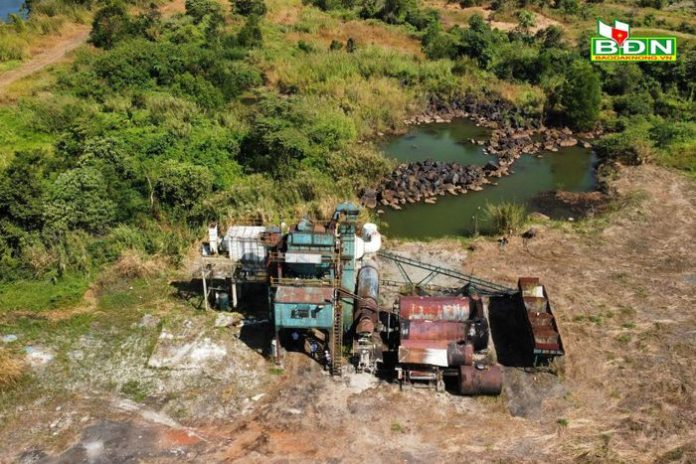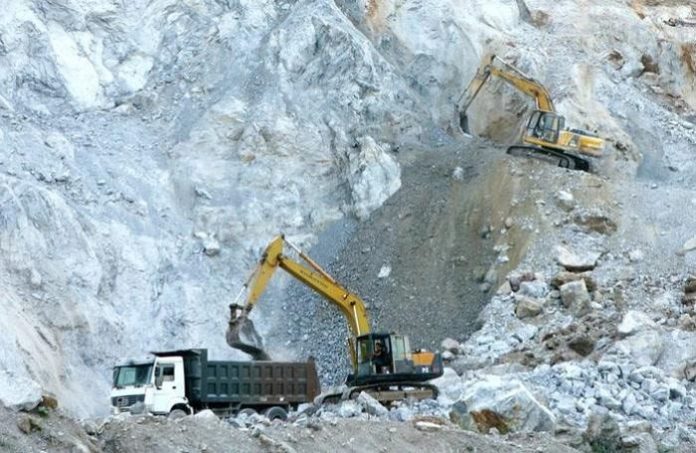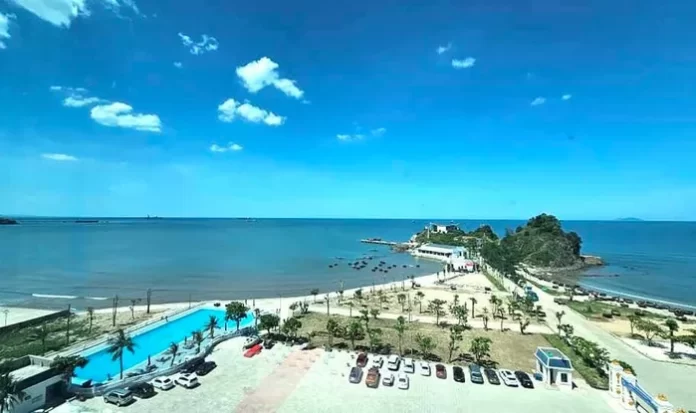Trân trọng giới thiệu tới quý độc giả Công bố quốc tế lĩnh vực môi trường số 47-2023.
Về quản lý môi trường
– Các chỉ số tuần hoàn dựa trên LCA của các hệ thống ở các quy mô khác nhau: một cách tiếp cận toàn diện.
– Tìm hiểu xu hướng cô lập carbon bằng cách sử dụng dữ liệu mô hình và vệ tinh trong các hệ sinh thái khác nhau ở Ấn Độ.
– Động lực của nền kinh tế xanh ở một thị trường mới nổi: Những hiểu biết chung và cụ thể theo ngành.
– Biến đổi khí hậu, căng thẳng nhiệt và phân tích sự biến đổi theo không gian-thời gian của nó ở các đô thị châu Âu.
– Từ tăng trưởng kinh tế đến tăng trưởng xanh toàn diện: Làm thế nào để phát thải carbon, đổi mới sinh thái và hợp tác quốc tế thúc đẩy tăng trưởng kinh tế và giải quyết vấn đề biến đổi khí hậu?
– Chúng ta có thể tin tưởng vào cam kết của các doanh nghiệp vừa và nhỏ ở Châu Âu để đạt được 12 SGD không? Một nghiên cứu khám phá về tính bền vững của doanh nghiệp.
– ‘Tương lai xanh’ so với ‘Ranh giới hành tinh’? Phát triển liên minh diễn ngôn trực tuyến trong xung đột kinh tế sinh học châu Âu.
– Không phải mọi thứ đều xanh trong quá trình chuyển đổi xanh: Những cân nhắc lý thuyết về cấu trúc thị trường và cạnh tranh.
– Tích hợp quản lý chất thải thực phẩm vào xử lý nước thải đô thị: Tác động kinh tế và môi trường.
Về môi trường đô thị
– Sự thay đổi trao đổi chất ở người trưởng thành khỏe mạnh đi du lịch đến các khu vực có mức độ ô nhiễm thấp: Một thí nghiệm tự nhiên về việc tiếp xúc với ozone.
– Tổng diện tích bề mặt lắng đọng trong phổi (LDSA) của các hạt không khí xung quanh ở khu vực thành thị Châu Âu.
– Kháng kháng sinh trong nước thải: Kịch bản của Ấn Độ.
– Phân tích nước thải cộng đồng trong các hệ thống cống phụ để phát hiện các biến thể SARS-CoV-2 ở quy mô nhỏ ở khu vực đô thị của Đức.
– Ô nhiễm không khí và va chạm xe cơ giới ở thành phố New York.
– Ước tính nhiệt độ không khí hàng ngày và mức độ ô nhiễm ở Catalonia: Mô hình không gian, thời gian toàn diện với nhiều mức phơi nhiễm.
– Phân bổ nguồn ô nhiễm không khí trong nhà: Những thách thức hiện tại và hướng đi trong tương lai.
– Những thay đổi trong môi trường vật chất và xã hội của khu dân cư có ý nghĩa quan trọng đối với sự thay đổi về sức khỏe tâm thần: Bằng chứng theo chiều dọc từ dữ liệu bảng của Hà Lan.
– Sự đánh đổi dưới áp lực? Phát triển không gian xanh đô thị trong bối cảnh tăng trưởng kinh tế và quản lý.
Về môi trường khu công nghiệp
– Các cơ sở tái chế chất thải điện tử của Vương quốc Anh có phải là nguồn gây ô nhiễm môi trường và phơi nhiễm nghề nghiệp với chất chống cháy brôm không?
– Hướng tới ngành công nghiệp môi trường xây dựng bền vững ở Singapore: Động lực, rào cản và chiến lược trong việc áp dụng quản lý cơ sở vật chất thông minh.
– Sự di chuyển và phân hủy asen trong đất nông nghiệp tiếp nhận nước thải từ khu công nghiệp lân cận trong 50 năm.
– Ứng dụng bùn dệt thiêu kết làm chất hấp phụ mới để loại bỏ Sb(V) khỏi nước thải dệt may: Hiệu suất, cơ chế và quan điểm.
– Làm vấy bẩn các vùng nước hậu công nghiệp chưa được khám phá: Đa dạng sinh học và tiềm năng bảo tồn của môi trường sống nước ngọt trong các đầm phá lắng đọng tro bay.
– Nguồn tài chính xanh tại các công ty niêm yết ở Iberia: Cách tiếp cận đầu tư có trách nhiệm với xã hội.
– Phương pháp đánh giá rủi ro sinh thái tiềm năng dựa trên các kịch bản phơi nhiễm và sinh thái (ERA-EES) để xác định rủi ro sinh thái đất xung quanh các khu vực khai thác kim loại.
– Đánh giá ô nhiễm thủy ngân tại một địa điểm quặng chính với cả hoạt động khai thác và luyện kim cổ xưa và công nghiệp.
– Nỗ lực mới nhằm kiểm soát ô nhiễm các hợp chất hữu cơ dễ bay hơi (VOC) – Công nghệ biến đổi sinh khối để hấp phụ khí VOC.
– Đánh giá ngắn gọn về sự phân bố trong môi trường và độc tính của các gốc tự do dai dẳng trong môi trường.
– Công bố quy tắc tạo hệ sinh thái kinh doanh tuần hoàn: Nghiên cứu điển hình trong ngành hóa chất.
CHUYÊN TRANG QUẢN LÝ MÔI TRƯỜNG
Tạp chí Môi trường và Đô thị Việt Nam
Xin trân trọng giới thiệu!
ENVIRONMENTAL MANAGEMENT / QUẢN LÝ MÔI TRƯỜNG
1. LCA based circularity indices of systems at different scales: a holistic approach
Science of The Total Environment, Volume 897, 1 November 2023, 165245
Abstract
Many are the definitions of Circular Economy as well as the policies and strategies for its implementation. However, gaps still exist in quantifying the effects of circularity. The existing approaches are usually sector- or product-specific, limited to microscale systems, and/or fail to simultaneously assess the environmental impacts of the studied system. This paper introduces a generally applicable method in which a set of LCA-based indices of circularity are able to detect the effects of circularity/symbiosis strategies on the environmental performance of meso- and macro-systems. These indices quantify the overall system’s circularity level by comparing the impacts of a system in which the components interact with each other (with a certain level of circularity) with an equivalent linear system (where no circularity takes place). The method works both on existing and projected systems, being able to track the effects of future circularity policies.
This method obviates the limitations and the gaps mentioned above: it applies to meso- and macro-systems, it is not bound to a specific sector, it allows to capture the environmental impacts, and it is sensitive to the temporal dimension.
This approach provides a tool to inform managers and policymakers for planning circularity actions and monitor their effectiveness while also capturing the temporal dimension.
2. Fine-grained sustainability assessment: County sustainable development in China from 2000 to 2017
Journal of Cleaner Production, Volume 425, 1 November 2023, 138798
Abstract
Rational assessment of the regional sustainable development level is an important prerequisite for formulating development strategies and achieving the UN Sustainable Development Goals (SDGs). Currently, little literature provides nuanced understanding for national sustainable development from the perspective of county sustainability. Such studies can provide more accurate regional heterogeneity characteristics and policy decision support. Thus, this paper applies the entropy weight method and Chinese county data from 2000 to 2017 to reassess the sustainability of Chinese counties. The results show that China’s county sustainability (Sustainable Development Index, SDI) is slowly improving. County sustainability performance is poorer in ethnic minority agglomerations, poor counties, old revolutionary counties, and central and western regions, better in county-level cities and eastern regions. The decomposition results show that economic sustainability and environmental sustainability are the main supporters of SDI growth, and livelihood sustainability is in urgent need of improvement. The regional inequality of SDI in Chinese counties gradually decreases, and inter-group differences are the main contributors to regional inequality in SDI. This paper provides support for China to develop county-level sustainable development measures and practice the SDGs. The findings could be useful for policymakers.
3. Understanding carbon sequestration trends using model and satellite data under different ecosystems in India
Science of The Total Environment, Volume 897, 1 November 2023, 166381
Abstract
This study discusses carbon sequestration variability in different ecosystems of India. Four different biosphere regions, each over 0.5° × 0.5° area, have been selected considering the geospatial and climatic variability of these regions expanding from Central India (CI), the Northeast region (NER), the Western Ghats (WG), and the Western Himalayan region (WHNI). The climatic conditions of these four regions are different so are the biosphere constituents of these regions. We expect the Gross Primary Productivity (GPP) to enhance during the all India summer monsoon rainfall season but in varied magnitudes suggesting a role of climatic parameters and flora in these regions. The GPP from FLUXCOM for the duration of 2001 to 2019 (19 years) and satellite-derived vegetation indices like the Normalized Vegetation Index (NDVI), Enhanced Vegetation Index (EVI), and Leaf Area Index (LAI) are used in this study to understand the response of regional vegetation to this variability. EVI seems to be better related to GPP in comparison to NDVI in the preliminary analysis. Further analysis suggests LAI correlates better to GPP than EVI and NDVI in different seasons in these four regions. Also, meteorological parameters like surface temperature, rainfall, soil water, and other derived parameters like Vapor Pressure Deficit (VPD) are studied. It is also observed that the year-to-year variability in the climatic conditions could also have a role to play in the observed features. It is proven that the climate around the world is experiencing changes. Vegetation is one of the potent markers to monitor the impact of climate change. These long-term data and trends were studied to understand if there is any significant impact of the changing climatic conditions on the vegetation in these regions. Our study shows that there is an increasing (positive) trend in GPP at these locations though at different rates. WG and WHNI have shown a significant high rate of increase (6.44 and 5.36 gCm−2 y−1, respectively) in GPP over the last two decades.
4. Drivers of green economy in an emerging market: Generic and sector-specific insights
Journal of Cleaner Production, Volume 425, 1 November 2023, 138857
Abstract
The study examines the drivers of the green economy generally and with a focus on sectors regarded as environmental-sensitive hotspots like waste, agriculture, forestry, energy, and transport sectors. The study was grounded on both the natural resource-based view and institutional theories. Creswell’s (2014) thematic analysis and the graphic framework of Miles and Huberman (1984, 1994) were used to address the respective objectives of the study. A total of 10 interviewees were selected purposively based on their expertise and the institutions in question who provided responses that were analysed. The results show that the three generic drivers of the green economy include pollution prevention revealed by the impact of climate change, and environmental degradation cost, environmental stewardship portrayed by inefficient resource utilization and global demand for change, as well as, sustainable development manifesting from a futuristic drive, a focus on people-planet-profit, and rejection of environmentally unfriendly development models. The findings further reveal the differences and interrelatedness of the drivers of the green economy within the 5 hotspot sectors under investigation. The results of the study reveal that there are different and sector-specific strategies that policymakers and practitioners have to apply in their quest to drive a green economy at the central government, local government and grassroots levels. The study proposes the development of a comprehensive national green economy policy and also the promotion of peer-to-peer knowledge transfer networks structured as Communities of Practice. This study is one of the few that explores the concept of the green economy within the macroeconomic level and is novel in attaching theoretical lenses.
5. Understanding the intricate tradeoffs among ecosystem services in the Beijing-Tianjin-Hebei urban agglomeration across spatiotemporal features
Science of The Total Environment, Volume 898, 10 November 2023, 165453
Abstract
Revealing the intricate interactions between ecosystem services and their values is essential for the comprehensive management of diverse ecosystems. However, understanding tradeoffs among various ecosystem services and their influencing factors, especially at different spatial scales, remains challenging, primarily due to the difficulty in quantifying cultural services. In this study, we conducted a comprehensive analysis of the ecosystem service value (ESV) at both grid and county scales in the Beijing-Tianjin-Hebei urban agglomeration from 2000 to 2020, considering the representation of different ecosystem services. Our investigation aimed to elucidate tradeoffs among ecosystem services and identify key natural-social-economic-climate drivers. The key findings are as follows: (1) Over the study period, the overall ESV in the Beijing-Tianjin-Hebei urban agglomeration exhibited an upward trend, with regulation of waterflows, water body, and forest land making the largest contributions. (2) At the grid scale, there were 3 tradeoffs and 52 synergies among multiple ecosystem services in 2000, which increased to 18 tradeoffs in 2020, indicating a considerable degradation of numerous ecosystem services. Conversely, at the county scale, all ecosystem services exhibited a synergistic relationship. (3) The most significant synergistic effect was observed between regulation of waterflows and maintenance of soil fertility, while the most prominent tradeoff effect was identified between food production and waste treatment. (4) Social-economic factors exerted a more substantial influence on ESV, followed by climate factors, whereas the impact of natural factors was limited. GDP emerged as the primary single driver of total ESV, while farmland production potential played a crucial role in shaping the 11 ecosystem services. Notably, GDP-temperature and GDP-farmland production potential output were identified as the most influential dual factors. These findings underscore the importance of simultaneously enhancing economic development, controlling temperature rise, and improving food production as essential measures to enhance ESV.
6. Climate change, heat stress and the analysis of its space-time variability in european metropolises
Journal of Cleaner Production, Volume 425, 1 November 2023, 138892
Abstract
Global warming is a pressing problem that necessitates immediate action. This phenomenon is particularly affecting the quality of life in larger cities due to population growth and human mobility. Understanding the space-time variability of the heat stress that various locations will face in the future is therefore crucial for us. Taking into account the aforementioned facts, the current study examined the evolution of the Hi heat stress index in four European capitals – Berlin, Madrid, Paris, and Rome – during the months of July, August, and September between 2008, 2012, and 2017. The European Space Agency (ESA) UrbClim climate model was used to collect environmental data. Furthermore, Local Climatic Zones (LCZ) classifications and land use/cover change (LULC) coverages were used to improve the evaluation and extrapolation of the results. According to the findings, the studied areas experienced significant increases in environmental temperatures and the heat stress index Hi between 2008 and 2017. The four cities’ average increase is 0.31 °C per decade, with the southern cities experiencing greater intensity and the northern cities experiencing less intensity. When comparing the spatiotemporal variability of heat stress in different zones, the study discovered that areas with more impervious areas and fewer green areas are more vulnerable to potential increases in heat stress. As a result, future urban developments with more green areas can be able to create spaces that are more resistant to heat stress, improving people’s quality of life.
7. Atmospheric wet organic nitrogen deposition in China: Insights from the national observation network
Science of The Total Environment, Volume 898, 10 November 2023, 165629
Abstract
Organic nitrogen (N) is an important component of atmospheric reactive N deposition, and its bioavailability is almost as important as that of inorganic N. Currently, there are limited reports of national observations of organic N deposition; most stations are concentrated in rural and urban areas, with even fewer long-term observations of natural ecosystems in remote areas. Based on the China Wet Deposition Observation Network, this study regularly collected monthly wet deposition samples from 43 typical ecosystems from 2013 to 2021 and measured related N concentrations. The aim was to provide a more comprehensive assessment of the multi-component characteristics of atmospheric wet N deposition and reveal the influencing factors and potential sources of wet dissolved organic N (DON) deposition. The results showed that atmospheric wet deposition fluxes of NO3−, NH4+, DON and dissolved total N (DTN) were 4.68, 5.25, 4.32, and 13.05 kg N ha−1 yr−1, respectively, and that DON accounted for 30 % of DTN deposition (potentially up to 50 % in remote areas). Wet DON deposition was related to anthropogenic emissions (agriculture, biomass burning, and traffic), natural emissions (volatile organic compound emissions from vegetation), and precipitation processes. The wet DON deposition flux was higher in South, Central, and Southwest China, with more precipitation and intensive agricultural activities or more vegetation cover, and lower in Northwest China and Inner Mongolia, with less precipitation and human activities or vegetation cover. DON was the main contributor to DTN deposition in remote areas and was possibly related to natural emissions. In rural and urban areas, DON may have been more influenced by agricultural activities and anthropogenic emissions. This study quantified the long-term spatiotemporal patterns of wet N deposition and provides a reference for future N addition experiments and N cycle studies. Further consideration of DON deposition is required, especially in the context of anthropogenic control of NO2 and NH3.
8. From economic growth to inclusive green growth: How do carbon emissions, eco-innovation and international collaboration develop economic growth and tackle climate change?
Journal of Cleaner Production, Volume 425, 1 November 2023, 138986
Abstract
The climate crisis is recognized as one of the world’s most serious concerns, posing a threat to environmental, social, and economic growth. However, previous work has failed to address the dynamic effects through which economic growth may affect green growth and climate crisis. In this research, we take a closer look at the impact of carbon emissions, eco-innovation adoption, and international collaboration on economic growth and the influence of economic growth on green growth. This paper used the generalized method of moments (GMM) for 54 African countries from 2010 to 2019, allied with an imbalanced panel of 540 observations. This paper finds a positive relationship between carbon emissions, eco-innovation international cooperation, and economic growth with p-values lower than 0.047. Our study discovers economic growth’s robust and positive impact on green growth with a p-value of 0.009. This research finds a three-pronged mediating effect of economic growth between its driving factors and green growth. Lastly, this paper furnishes new visions into the argument over economic growth versus green growth. It informs policymakers of the need to pay attention to the growing effect of eco-innovation driving factors on attaining sustainable and greener growth and climate crisis mitigation.
9. Drought characteristics and dominant factors across China: Insights from high-resolution daily SPEI dataset between 1979 and 2018
Science of The Total Environment, Volume 901, 25 November 2023, 166362
Abstract
Drought, a complex phenomenon exacerbated by climate change, is influenced by various climate factors. The escalating global temperatures associated with climate change, impact precipitation patterns and water cycle processes, consequently intensifying the occurrence and severity of droughts. To effectively address and adapt to these challenges, it is crucial to identify the dominant climate factors driving drought events. In this study, we utilized the 1979–2018 Chinese meteorological forcing dataset to calculate the daily Standardized Precipitation Evapotranspiration Index (SPEI). The Theil-Sen and Mann-Kendall (M-K) tests were employed to analyze the spatial and temporal trends of drought severity and duration. Additionally, partial correlation analysis was conducted to examine the relationship between climate factors (precipitation and potential evapotranspiration (PET)) and drought characteristic (drought severity and duration). Through this comprehensive analysis, we aimed to identify the primary factors influencing drought severity and duration. The findings revealed the following key results: (1) Over the 40-year period from 1979 to 2018, drought trends in China and its seven climate divisions exhibited an increasing pattern. (2) During drought periods, most regions exhibited a positive correlation between PET and drought severity and duration, while precipitation demonstrated a negative correlation. However, certain areas experiencing severe drought displayed a negative correlation between PET and drought severity and duration, precipitation demonstrated a positive correlation with drought severity and duration. (3) PET emerged as the dominant climatic factor for meteorological drought in the majority of China. These findings contribute valuable insights for policymakers in the development of climate change adaptation and mitigation strategies. By understanding the dominant climate factors driving drought events, policymakers can implement effective measures to mitigate the adverse socioeconomic and environmental impacts associated with climate change.
10. Can we count on the commitment of European SMEs to achieve SGD12? An exploratory study of business sustainability
Journal of Cleaner Production, Volume 425, 1 November 2023, 139016
Abstract
The United Nations created the 17 Sustainable Development Goals (SDG) to serve as a compass for a better future, i.e., for a sustainable future, a green, socially and financially prosperous tomorrow. Due to the significant responsibility of small and medium-sized enterprises (SMEs) to environmental dilapidation and destruction, they are an essential engine to the green transition. Business activities are central to achieving SDG12. This article focuses on the contribution of European SMEs to carbon neutrality. We explore the influence of SMEs’ investment in micro resource-efficiency actions on adopting macro measures of carbon neutrality and whether investments, financial, administrative, and regulatory requirements influence the implementation of resource efficiency practices. This is the first attempt to explore the interrelationship between micro resource efficiency and macro climate change measures. A quantitative analysis was performed using descriptive statistics, factor analysis (exploratory and confirmatory factor analysis) and the partial least squares method. Data from 2021 included 17,144 European SMEs and were retrieved from the fifth wave of the Flash Eurobarometer 498. The results reveal that SMEs’ implementation of resource-efficient actions at the micro level positively influenced the adoption of macro-level measures for decarbonization. Furthermore, implementing these micro-measures was positively influenced by business investment and negatively affected by external sources of finance and regulatory and administrative requirements. Overall, the findings indicate that European SMEs still have a long way to go toward the twelfth SDG and decarbonization.
11. Urbanization expands the fluctuating difference in gross primary productivity between urban and rural areas from 2000 to 2018 in China
Science of The Total Environment, Volume 901, 25 November 2023, 166490
Abstract
Urban and rural vegetation are affected by both climate change and human activities, but the role of urbanization in vegetation productivity is unclear given the dual impacts. Here, we delineated urban area (UA) and rural area (RA), quantified the relative impacts of climate change and human activities on gross primary production (GPP) in 34 major cities (MCs) in China from 2000 to 2018, and analyzed the intrinsic impacts of urbanization on GPP. First, we found that the total urban impervious surface coverage (ISC) of the 34 MCs increased by 13.25 % and the mean annual GPP increased by 211 gC m−2 during the study period. GPP increased significantly in urban core areas, but decreased significantly in urban expansion areas, which was mainly due to a large amount of vegetation loss due to land use conversion. Second, the variability of GPP in UA was generally lower than in RA. Both climate change and human activities had a positive impact on GPP in UA and RA in the 34 MCs, of which the contribution was 49 % and 51 % in UA, and 76 % and 24 % in RA, respectively. Third, under climate change and human activities, the increase in GPP offset 4.96 % and 12.35 % of the impact of land use conversion on GPP in 2000 and 2018, respectively, which indicated that the offset strengthened over time. These findings emphasize the role of human activities in promoting carbon sequestration in urban vegetation, which is crucial for better understanding the processes and mechanisms of urban carbon cycles. Decision-makers can manage urban vegetation based on vegetation carbon sequestration potential as regions urbanize, aiding comprehensive decision-making.
12. Toward an ecological civilization: Exploring changes in China’s land use policy over the past 35 years using text mining
Journal of Cleaner Production, Volume 427, 15 November 2023, 139265
Abstract
Exploring multi-goal sustainable development paths is a global concern. To date, little is known about the characteristics of and logic behind the evolution of China’s land use policies (LUPs), especially when they are linked to China’s governance philosophy of an ecological civilization (EC). An EC is a unique development concept in China that emphasizes human-nature coexistence alongside economic progress. Therefore, we examine the evolutionary process of China’s LUPs in the context of an EC. We identify meaningful shifts that have occurred in those policies, as well as reveal the logic behind the changes. Based on staged text mining of 220 national LUPs initiated in China between 1986 and 2021, by disclosing the changes in the number, foci, goals, concepts, measures, and reform methods of LUPs, this paper provides an overview and four-dimensional deconstruction of the country’s LUP evolution in the context of an EC. Three major findings emerge from text mining. First, China’s LUP has evolved through three stages, with modifications in the number, dominant foci, and themes of the policies across each stage. Second, comprehensive and significant alterations have transpired in the orientation, goals, concepts, measures, and reform approaches of the policies. Third, the transformation in LUP has transpired centering on four dimensions: improving economic efficiency; balancing production, living, and ecology; promoting social equity; and conserving ecology. These four aspects accord with four governance concepts of an EC—efficient development, symbiosis of humans and nature, social harmony, and green development. We also discuss how China’s LUP evolution offers a valuable case for exploring sustainable development at a global level.
13. ‘Green future’ versus ‘Planetary boundaries’? Evolving online discourse coalitions in European bioeconomy conflicts
Journal of Cleaner Production, Volume 425, 1 November 2023, 139058
Abstract
The European Commission is pursuing a circular bioeconomy to tackle pressing sustainability challenges, such as climate change and fossil dependency. Previous bioeconomy policy studies demonstrated the existence of competing bioeconomy discourses in the European Union. However, it remains nebulous how such discursive conflicts emerge and change, particularly in online settings. In this paper, we provide a more in-depth analysis of how argumentative changes of actors alter the network of online dynamic discourse coalitions. We base our findings on interviews and a qualitative discourse network analysis of 9983 tweets about European Union bioeconomy policies from the period 2008–2021. Our results indicate that initially, expert debates centred around storylines on bioeconomy advantages. After the 2012 Bioeconomy Strategy, the debate diversified with the entry of new actors and storylines. Two discourse coalitions, ‘Green future’ and ‘Planetary boundaries’, emerged around conflicting storyline clusters. In the aftermath of the 2018 Bioeconomy Strategy update, the debate simplified into core argumentations of few, highly conflicting storylines, leading to a polarization of the two discourse coalitions. Storyline hijacking further added to polarization and conflict. Understanding the evolution of online dynamic discourse coalitions provides new opportunities for practitioners to open up discourses towards storylines from other parts of the discourse network. This can help to prevent locking-in the limited range of solutions in congruence with the dominant ‘Green future’ discourse.
14. Not everything is green in the green transition: Theoretical considerations on market structure, and competition
Journal of Cleaner Production, Volume 427, 15 November 2023, 139300
Abstract
This paper studies how the green transition towards a more sustainable and environmentally friendly economy affects the market structure and the competition between firms. In this context, we propose a two-stage game-theoretical model of competition between firms in prices and green investments. The model delivers several scenarios but two are particularly concerning. One such scenario is called the “dirty” equilibrium, in which firms delay the green transition investments. The other scenario is called the “partial green” equilibrium scenario, in which one firm makes the green transition investments obtaining a leading position, while the other remains producing the “dirty” product. In addition to the associated environmental damages, both scenarios are also problematic because they reduce market competition and the number of firms. In this respect, the “partial green” equilibrium may be even more problematic in the long-run because the green leader may perpetuate its advantage towards some kind of monopoly or market power. Inflation and less competition are particular robust implications of the green transition process that are found in this paper.
15. Examining the representativeness heuristic and anchoring effects in China’s carbon markets
Journal of Cleaner Production, Volume 428, 20 November 2023, 139079
Abstract
This paper proposes a novel integrated approach incorporating grey relational analysis, corresponding correlation test, with vector autoregression and panel vector autoregression models to examine the representativeness heuristic and anchoring effects in carbon markets. The grey relational analysis and corresponding correlation test measure the representativeness heuristic in eight pilot carbon markets. The vector autoregression and panel vector autoregression models detect the anchoring effects in eight pilot carbon markets and the overall carbon market. The study first explores the representativeness heuristic and anchoring effects in China’s carbon markets. Taking the 2014–2021 United Nations Climate Change Conferences (COP20–COP26) as an event, the proposal of China’s carbon emissions peak and carbon-natural targets, as well as the establishment of China’s national carbon market as three events, the empirical results demonstrate that Hubei, Guangdong, Shenzhen, Beijing, Shanghai, and Chongqing six pilot carbon markets were found to exhibit the representativeness heuristics for the COP21. Hubei, Shenzhen, Beijing, and Chongqing carbon markets were found to exhibit the representativeness heuristics for the proposal of China’s carbon emissions peak and carbon-natural targets, and the establishment of China’s national carbon market. Anchoring effects were found to exist in Guangdong, Tianjin, and Chongqing carbon markets, while no anchoring effect has been found to exist in the overall carbon market. Investor sentiment is one of the crucial factors affecting carbon prices.
16. Grey forecasting the impact of population and GDP on the carbon emission in a Chinese region
Journal of Cleaner Production, Volume 425, 1 November 2023, 139025
Abstract
Beijing-Tianjin-Hebei metropolitan area is a significant carbon emission center. The region’s early achievement of peak carbon targets is critical to the nation’s achievement of peak carbon targets. In this paper, it is proposed to use different orders of grey models to classify into three scenarios. Based on three scenarios, the grey multivariate convolutional model with new information priority accumulation is adopted to predict carbon emissions in the Beijing-Tianjin-Hebei region and select the scenario suitable for local development. The results show that: (1) The Beijing region has already achieved peak carbon, the Tianjin region may not reach its peak carbon target by 2030, and the Hebei region is expected to reach its peak carbon target by 2030. (2) The high rate of carbon emission reduction scenario will greatly improve the air quality of Beijing. The low-speed growth carbon emission scenario is more in line with the future development of Tianjin city. The low-rate carbon reduction scenario is more in line with the synergistic governance of pollution reduction and carbon reduction in Hebei Province. (3) Beijing’s population policy in the most recent years has been conducive to improving the local environment. Tianjin’s medium-term population policy is more in line with the local area. Hebei’s medium-term industrial structure reform is favorable to local development.
17. Integrating food waste management into urban wastewater treatment: Economic and environmental impacts
Journal of Environmental Management, Volume 345, 1 November 2023, 118517
Abstract
Food waste is the main component of municipal solid waste (MSW) and its sustainable management is a global challenge. Co-treatment of food waste and urban wastewater in wastewater treatment plants (WWTPs) could be a plausible management strategy to reduce the MSW amount that is disposed in landfills, while converting its organic fraction into biogas in the WWTP. However, the increased organic load in the wastewater influent would impact the capital and operating costs of the WWTP, mainly due to the increase in sludge production. In this work, different scenarios for co-treatment of food waste and wastewater were studied from both economic and environmental perspectives. These scenarios were designed based on different sludge disposal and management options. The results showed that the co-treatment of food waste and wastewater would be more environmentally friendly than their separate treatment, but its economic feasibility strongly depends on the ratio between the management costs of MSW and sewage sludge.
URBAN ENVIRONMENT/ MÔI TRƯỜNG ĐÔ THỊ
1. Challenges detecting SARS-CoV-2 in Costa Rican domestic wastewater and river water
Science of The Total Environment, Volume 897, 1 November 2023, 165393
Abstract
This study presents the development of a SARS-CoV-2 detection method for domestic wastewater and river water in Costa Rica, a middle-income country in Central America. Over a three-year period (November to December 2020, July to November 2021, and June to October 2022), 80 composite wastewater samples (43 influent and 37 effluent) were collected from a Wastewater Treatment Plant (SJ-WWTP) located in San José, Costa Rica. Additionally, 36 river water samples were collected from the Torres River near the SJ-WWTP discharge site. A total of three protocols for SARS-CoV-2 viral concentration and RNA detection and quantification were analyzed. Two protocols using adsorption-elution with PEG precipitation (Protocol A and B, differing in the RNA extraction kit; n = 82) were used on wastewater samples frozen prior to concentration, while wastewater (n = 34) collected in 2022 were immediately concentrated using PEG precipitation. The percent recovery of Bovine coronavirus (BCoV) was highest using the Zymo Environ Water RNA (ZEW) kit with PEG precipitation executed on the same day as collection (mean 6.06 % ± 1.37 %). It was lowest when samples were frozen and thawed, and viruses were concentrated using adsorption-elution and PEG concentration methods using the PureLink™ Viral RNA/DNA Mini (PLV) kit (protocol A; mean 0.48 % ± 0.23 %). Pepper mild mottle virus and Bovine coronavirus were used as process controls to understand the suitability and potential impact of viral recovery on the detection/quantification of SARS-CoV-2 RNA. Overall, SARS-CoV-2 RNA was detected in influent and effluent wastewater samples collected in 2022 but not in earlier years when the method was not optimized. The burden of SARS-CoV-2 at the SJ-WWTP decreased from week 36 to week 43 of 2022, coinciding with a decline in the national COVID-19 prevalence rate. Developing comprehensive nationwide surveillance programs for wastewater-based epidemiology in low-middle-income countries involves significant technical and logistical challenges.
2. Urban vegetation cooling capacity was enhanced under rapid urbanization in China
Journal of Cleaner Production, Volume 425, 1 November 2023, 138906
Abstract
The cooling capacity of urban vegetation, which forms “urban cooling islands” (UCI), can play an important role in mitigating urban heat islands (UHI). However, the spatiotemporal changes in UCI intensity at the national scale have not been fully explored under rapid urbanization in China. In this study, based on 23,081 Landsat images from the Google Earth Engine, spatiotemporal UCI was obtained for 320 cities in China from 2000 to 2018 and correlated with meteorological and urbanization parameters to uncover the factors driving UCI changes. The direct and indirect effects of the driving factors on UCI were investigated using structural equation modeling. Our results showed that China experienced 12.38%, 181.23%, 83.6%, and 22.63% increases in population density, gross domestic product (GDP), the impervious surface, and leaf area index (LAI), respectively, between 2000 and 2018. Furthermore, we found more rapid urbanization in the temperate continental climate (TCC) zone than in the temperate monsoon climate (TMC) and subtropical monsoon climate (SMC) zones in China. The national averaged UCI was 2.47 °C, with the largest UCI recorded in small cities and TCC zones. From 2000 to 2018, over 70% of cities showed an increasing trend in UCI intensity, mainly concentrated in TMC and megacities. At the national scale, the increase in UCI was likely explained by a combination result of the intensified wind speed, decrease in urban areas, and enhanced LAI. We also identified that the driving mechanisms of UCI were very different in different climatic zones. In TCC, precipitation had a major impact on UCI intensity at a threshold of 78.92 mm. In TMC and SMC, in addition to temperature, urbanization factors significantly influenced UCI. The main factors in TMC were LAI, with a specific threshold of 1.15. These results deepen the understanding of UCI formation and provide new insights into the regional adaptation of urban vegetation to mitigate urban heat waves.
3. Metabolomic alterations in healthy adults traveling to low-pollution areas: A natural experiment with ozone exposure
Science of The Total Environment, Volume 897, 1 November 2023, 165501
Abstract
Numerous epidemiological studies have demonstrated links between short-term ozone exposure to various adverse health outcomes, but some ozone-induced pathological mechanisms remain unclear. To fill this knowledge gap, we enrolled 36 healthy young adults living in high-ozone areas and performed an untargeted metabolomic analysis in serum collected before, during, and after their travel to a low-ozone scenic area. Reviewing the literature, we found 16 metabolites significantly associated with ozone, pointing to neurological health, type 2 diabetes (T2D) risk, and cardiovascular health. Notably, we observed significant changes in these 16 metabolites from the ozone reduction when participants traveled from the campus to the scenic area (adjusted p-value < 0.05). However, when ozone increased after participants returned to campus from the scenic area, we observed that T2D risk and cardiovascular health-related metabolites returned to their original state (adjusted p-value < 0.05), but neurological health-related metabolites did not change significantly with ozone exposure. Our study showed that ozone exposure was linked to prompt alterations in serum metabolites related to cardiovascular health and T2D risk but less sensitive changes in neurological health-related metabolites. Among many lipids, free fatty acids and acylcarnitines were the most sensitive compounds positively associated with changes in ozone exposure.
4. Prediction of CO2 emission peak and reduction potential of Beijing-Tianjin-Hebei urban agglomeration
Journal of Cleaner Production, Volume 425, 1 November 2023, 138945
Abstract
Forecasting the future emission trajectories and the relating sensitive driving factors of emissions for cities is of great significance to formulate realizable CO2 mitigation policies. To proceed the forecasting, studies on peak prediction and quantification of reduction potential at the city level are essential. However, the studies in the area are very limited. Selecting the Beijing-Tianjin-Hebei urban agglomeration (BTH) as the study region, this paper aims to contribute to the research area and provides implications for other cities or urban agglomerations. The Kaya identity and multi-scenario simulation were employed to predict the dynamic evolution pathways of CO2 emissions from 2021 to 2035 and explore the differential CO2 peak time, peak value, and reduction potential for 13 cities in BTH. Monte Carlo simulation, Mann-Kendall trend test and Sen’s slope estimation method are jointly used to reduce uncertainties in estimation. The Monte Carlo simulation results show that most cities in BTH have already reached their CO2 emissions peak, while Tianjin, Langfang, Cangzhou and Tangshan are expected to reach their peaks between 2025 and 2030. Among them, 5 and 8 cities have the risk of not reaching their peak before 2035 in the high consumption scenario (HCS) and extensive development scenario (EDS) respectively. Comparative analysis reveals that low-carbon scenario (LCS) and sustainable development scenario (SDS) have significant effects on emissions reductions. The top three cities in terms of accumulative emission reduction in 2021–2035 are Tianjin, Tangshan and Cangzhou, estimated as 117.82–250.75 Mt CO2 in LCS and 217.77–454.10 Mt CO2 in SDS, respectively. The results of sensitivity analysis reveal that the most critical driver of CO2 emissions in Beijing is population, while that is GDP per capita for Tianjin. Langfang and Hengshui showed the highest sensitivity to energy intensity. Accordingly, these cities have differentiated concerns and priorities to achieve their carbon peak goal as scheduled.
5. Ambient air particulate total lung deposited surface area (LDSA) levels in urban Europe
Science of The Total Environment, Volume 898, 10 November 2023, 165466
Abstract
This study aims to picture the phenomenology of urban ambient total lung deposited surface area (LDSA) (including head/throat (HA), tracheobronchial (TB), and alveolar (ALV) regions) based on multiple path particle dosimetry (MPPD) model during 2017–2019 period collected from urban background (UB, n = 15), traffic (TR, n = 6), suburban background (SUB, n = 4), and regional background (RB, n = 1) monitoring sites in Europe (25) and USA (1). Briefly, the spatial-temporal distribution characteristics of the deposition of LDSA, including diel, weekly, and seasonal patterns, were analyzed. Then, the relationship between LDSA and other air quality metrics at each monitoring site was investigated. The result showed that the peak concentrations of LDSA at UB and TR sites are commonly observed in the morning (06:00–8:00 UTC) and late evening (19:00–22:00 UTC), coinciding with traffic rush hours, biomass burning, and atmospheric stagnation periods. The only LDSA night-time peaks are observed on weekends. Due to the variability of emission sources and meteorology, the seasonal variability of the LDSA concentration revealed significant differences (p = 0.01) between the four seasons at all monitoring sites. Meanwhile, the correlations of LDSA with other pollutant metrics suggested that Aitken and accumulation mode particles play a significant role in the total LDSA concentration. The results also indicated that the main proportion of total LDSA is attributed to the ALV fraction (50 %), followed by the TB (34 %) and HA (16 %). Overall, this study provides valuable information of LDSA as a predictor in epidemiological studies and for the first time presenting total LDSA in a variety of European urban environments.
6. Antibiotic resistance in wastewater: Indian scenario
Environmental Pollution, Volume 337, 15 November 2023, 122586
Abstract
The surge of Antibiotic Resistant Bacteria (ARB) in the environment is poised to be the next health threat. World Health Organisation’s (WHO’s) Global Antimicrobial Surveillance System (GLASS) report indicates that developing countries may be at a greater risk. Among various factors, the major driver here could be untreated wastewater and poor sanitation. Bacteria are extremely adaptable to their surroundings and develop Antimicrobial Resistance (AMR) when exposed to antibiotics and other pollutants that cause microbial stress. Thus, untreated domestic wastewater drains could easily become hotspots for the occurrence of ARBs. This study reports surveillance of sewage-carrying drains across four urban cities in India and demonstrated the presence of ARBs in the bacterial community against 7 classes of antibiotics, namely, β-Lactams, Chloramphenicol, Glycopeptides, Macrolides, Tetracycline, Third Generation Cephalosporin, and Quinolones. Untreated domestic wastewater flowing in target drains was collected twice a month, for a period of six months and the microbial community was subjected to Antibiotic Susceptibility Testing (AST) by plate assays. The zone of inhibition was recorded and interpreted as per the interpretive chart of The Clinical & Laboratory Standards Institute (CLSI) & The European Committee on Antimicrobial Susceptibility Testing (EUCAST). The total number of samples showing resistance against antibiotics was used to define an Antibiotic Resistance Index (ARI), calculated for all 20 sampling sites (drains). Results demonstrated that the highest ARI was observed in Delhi and Mumbai, ranging from 0.81 to 0.92 in Delhi and 0.49–0.56 in Mumbai. This surveillance study reveals the antibiotic resistance pattern of the representative bacterial community in the drains and goes beyond few targeted bacterial species. The alarming presence of antibiotic resistant bacterial community highlights the concern of ARBs being the next looming health threat. This report aims to demonstrates the importance of considering sewage surveillance on routine basis by state authorities.
7. Analyzing community wastewater in sub-sewersheds for the small-scale detection of SARS-CoV-2 variants in a German metropolitan area
Science of The Total Environment, Volume 898, 10 November 2023, 165458
Abstract
Wastewater surveillance of SARS-CoV-2 proved useful, including for identifying the local appearance of newly identified virus variants. Previous studies focused on wastewater treatment plants (WWTP) with sewersheds of several hundred thousand people or at single building level, representing only a small number of people. Both approaches may prove inadequate for small-scale intra-urban inferences for early detection of emerging or novel virus variants. Our study aims (i) to analyze SARS-CoV-2 single nucleotide variants (SNVs) in wastewater of sub-sewersheds and WWTP using whole genome sequencing in order to (ii) investigate the potential of small-scale detection of novel known SARS-CoV-2 variants of concern (VOC) within a metropolitan wastewater system. We selected three sub-sewershed sampling sites, based on estimated population- and built environment-related indicators, and the inlet of the receiving WWTP in the Ruhr region, Germany. Untreated wastewater was sampled weekly between October and December 2021, with a total of 22 samples collected. SARS-CoV-2 RNA was analyzed by RT-qPCR and whole genome sequencing. For all samples, genome sequences were obtained, while only 13 samples were positive for RT-qPCR. We identified multiple specific SARS-CoV-2 SNVs in the wastewater samples of the sub-sewersheds and the WWTP. Identified SNVs reflected the dominance of VOC Delta at the time of sampling. Interestingly, we could identify an Omicron-specific SNV in one sub-sewershed. A concurrent wastewater study sampling the same WWTP detected the VOC Omicron one week later. Our observations suggest that the small-scale approach may prove particularly useful for the detection and description of spatially confined emerging or existing virus variants circulating in populations. Future studies applying small-scale sampling strategies taking into account the specific features of the wastewater system will be useful to analyze temporal and spatial variance in more detail.
8. Air pollution and motor vehicle collisions in New York city
Environmental Pollution, Volume 337, 15 November 2023, 122595
Abstract
Road traffic accidents are a pervasive feature of everyday life, killing 36,500 people, injuring 4.5 million and, overall, generating costs to the American society of $340 billion in 2019. Understanding the underlying factors can improve the design of prevention strategies. We use all road traffic collisions in New York City between 2013 and 2021 (N = 1,269,600) and match each individual collision to the nearest weather and air pollution station. Our study uses highly disaggregated data using an hourly frequency of collisions at a fine spatial level incorporating various air pollutants and weather factors. We employ an instrumental variable approach using temperature inversions to provide exogenous variation in air pollution addressing endogeneity and measurement error concerns. We find that higher concentrations of carbon monoxide (CO) and sulfur dioxide (SO2) increase the number of collisions but leave the severity (persons injured or killed) unaffected. Part of this can be explained by the effect of air pollutants on aggressive behavior: CO (p < .05) and SO2 (p < .01) increase the number of collisions caused by aggressive driving. Interestingly, this channel is only present in male drivers. Our results provide additional evidence that air pollution not only adversely affects health, but also has “non-health” related effects which are costly for the society.
9. Evaluating city road dust emission characteristics with a dynamic method: A case study in Luoyang, China
Science of The Total Environment, Volume 898, 10 November 2023, 165520
Abstract
Road dust, a significant contributor to non-exhaust particulate matter emissions in urban transport, poses considerable health risks, necessitating accurate and high-resolution data for effective control. The traditional AP-42 method offers data on point-specific dust emissions, while vehicle-based testing ascertains the relative emission intensity in the road network. However, a clear mathematical relationship between these measurements has been elusive, limiting efficiency in emission control. By integrating the On-board Conventional Pollutant Monitoring System with the AP-42 method, we devised a dynamic link between the concentration of particles in vehicle plumes and actual road dust emissions. This relationship is substantiated by a notable correlation (R2 = 0.91) between our emission factors and those calculated using the AP-42 method. Significant variations emerged in dust emission factors across road types, with changes between −30.1 % to +57.79 % from the average (0.05 g·vehicle−1·km−1), in tandem with traffic flow fluctuations of approximately ±90 %. Meteorological factors, except for continuous rainfall, showed minimal impact on dust emissions. However, our findings revealed a significant underestimation (58.87 %) of road dust PM10 emissions by the AP-42 method. Intriguingly, we found that short-range emission hotspots substantially contribute to total emissions, suggesting a potential 50 % reduction by controlling merely 8.8 % ± 2.5 % of the total road length. Our research elucidates the interplay between road dust emissions, road types, and human activities. The application of a dynamic, high-resolution assessment method enhances our understanding of the impacts of road dust on urban particulate pollution, allows accurate hotspot identification, and aids in developing efficacious strategies for air quality enhancement.
10. Estimating daily air temperature and pollution in Catalonia: A comprehensive spatiotemporal modelling of multiple exposures
Environmental Pollution, Volume 337, 15 November 2023, 122501
Abstract
Environmental epidemiology studies require models of multiple exposures to adjust for co-exposure and explore interactions. We estimated spatiotemporal exposure to surface air temperature and pollution (PM2.5, PM10, NO2, O3) at high spatiotemporal resolution (daily, 250 m) for 2018–2020 in Catalonia. Innovations include the use of TROPOMI products, a data split for remote sensing gap-filling evaluation, estimation of prediction uncertainty, and use of explainable machine learning.
We compiled meteorological and air quality station measurements, climate and atmospheric composition reanalyses, remote sensing products, and other spatiotemporal data. We performed gap-filling of remotely-sensed products using Random Forest (RF) models and validated them using Out-Of-Bag (OOB) samples and a structured data split. The exposure modelling workflow consisted of: 1) PM2.5 station imputation with PM10 data; 2) quantile RF (QRF) model fitting; and 3) geostatistical residual spatial interpolation. Prediction uncertainty was estimated using QRF. SHAP values were used to examine variable importance and the fitted relationships. Model performance was assessed via nested CV at the station level.
Evaluation of the gap-filling models using the structured split showed error underestimation when using OOB. Temperature models had the best performance (=0.98) followed by the gaseous air pollutants (=0.81 for NO2 and 0.86 for O3), while the performance of the PM2.5 and PM10 models was lower (
=0.57 and 0.63 respectively). Predicted exposure patterns captured urban heat island effects, dust advection events, and NO2 hotspots. SHAP values estimated a high importance of TROPOMI tropospheric NO2 columns in PM and NO2 models, and confirmed that the fitted associations conformed to prior knowledge.
Our work highlights the importance of correctly validating gap-filling models and the potential of TROPOMI measurements. Moderate performance in PM models can be partly explained by the poor station coverage. Our exposure estimates can be used in epidemiological studies potentially accounting for exposure uncertainty.
11. Source apportionment for indoor air pollution: Current challenges and future directions
Science of The Total Environment, Volume 900, 20 November 2023, 165744
Abstract
Source apportionment (SA) for indoor air pollution is challenging due to the multiplicity and high variability of indoor sources, the complex physical and chemical processes that act as primary sources, sinks and sources of precursors that lead to secondary formation, and the interconnection with the outdoor environment. While the major indoor sources have been recognized, there is still a need for understanding the contribution of indoor versus outdoor-generated pollutants penetrating indoors, and how SA is influenced by the complex processes that occur in indoor environments. This paper reviews our current understanding of SA, through reviewing information on the SA techniques used, the targeted pollutants that have been studied to date, and their source apportionment, along with limitations or knowledge gaps in this research field. The majority (78 %) of SA studies to date focused on PM chemical composition/size distribution, with fewer studies covering organic compounds such as ketones, carbonyls and aldehydes. Regarding the SA method used, the majority of studies have used Positive Matrix Factorization (31 %), Principal Component Analysis (26 %) and Chemical Mass Balance (7 %) receptor models. The indoor PM sources identified to date include building materials and furniture emissions, indoor combustion-related sources, cooking-related sources, resuspension, cleaning and consumer products emissions, secondary-generated pollutants indoors and other products and activity-related emissions. The outdoor environment contribution to the measured pollutant indoors varies considerably (<10 %- 90 %) among the studies. Future challenges for this research area include the need for optimization of indoor air quality monitoring and data selection as well as the incorporation of physical and chemical processes in indoor air into source apportionment methodology.
12. Changes in neighborhood physical and social environments matter for change in mental health: Longitudinal evidence from Dutch panel data
Environmental Pollution, Volume 337, 15 November 2023, 122540
Abstract
Numerous neighborhood environments have been recognized to affect mental health, but only a few longitudinal studies investigated these associations jointly and whether different population groups are affected differently. We used three-wave panel data of 2699 adults between 2010 and 2016 in the Netherlands to assess the associations between changes in neighborhood physical and social environments and mental health changes. Further, we assessed possible effect modification of gender and income. Mental health was measured using the Mental Health Inventory. Time-varying exposure to green space, blue space, population density, air pollution, socioeconomic deprivation, and social fragmentation were assigned based on individuals’ neighborhood histories. Fixed-effect regressions were conducted to assess within-person associations between single and multiple exposures on mental health for the entire sample and stratified by gender and income. Our single-exposure models showed that increases in blue space were significantly associated with mental health improvements, while increases in fine particulate matter (PM2.5) resulted in declines in mental health. These associations were not attenuated in the multi-exposure model. We observed no significant associations for the remaining environments. Stratification analyses showed that females’ mental health further declined as PM2.5 concentrations increased compared to males. Increasing levels of socioeconomic deprivation were associated with further declines in mental health among the less well-off compared with higher-income earners. Our longitudinal findings suggested that neighborhood physical and social environment changes were associated with mental health changes. Future research is required to establish the underlying pathways.
13. Distribution, removal and ecological risk assessment of antibiotics in leachate from municipal solid waste incineration plants in Shanghai, China
Science of The Total Environment, Volume 900, 20 November 2023, 165894
Abstract
Leachate from Municipal Solid Waste (MSW) incineration plants contains multiple antibiotics. However, current knowledge of antibiotics in such leachate is very limited compared to landfill leachate. In this study, the distribution, removal and ecological risks of 8 sulfonamides (SAs), 4 quinolones (FQs), and 4 macrolides (MLs) antibiotics in leachate from three MSW incineration plants in Shanghai were investigated. The results showed that 12 types of target antibiotics were detected at high concentrations (7737.3–13,758.7 ng/L) in the fresh leachate, exceeding the concentrations reported for landfill leachate. FQs were the dominant antibiotics detected in all three fresh leachates, accounting for >60 % of the total detected concentrations. The typical “anaerobic-anoxic/aerobic-anoxic/aerobic-ultrafiltration” treatment process removed the target antibiotics effectively (89.0 %–93.4 %), of which the anaerobic unit and the primary anoxic/aerobic unit were the most important antibiotic removal units. Biodegradation was considered to be the dominant removal mechanism, removing 78.11 %–92.37 % of antibiotics, whereas sludge adsorption only removed 1.02 %–10.89 %. Antibiotic removal was significantly correlated with leachate COD, pH, TN, and NH3-N, indicating that they may be influential factors for antibiotic removal. Ecological risk assessment revealed that ofloxacin (OFX) and enrofloxacin (EFX) in the treated leachate still posed high risks to algae and crustaceans. This research provides insights into the fate of antibiotics in leachate.
14. Quantifying the scale-dependent relationships of PM2.5 and O3 on meteorological factors and their influencing factors in the Beijing-Tianjin-Hebei region and surrounding areas
Environmental Pollution, Volume 337, 15 November 2023, 122517
Abstract
To investigate the variations of PM2.5 and O3 and their synergistic effects with influencing factors at different time scales, we employed Bayesian estimator of abrupt seasonal and trend change to analyze the nonlinear variation process of PM2.5 and O3. Wavelet coherence and multiple wavelet coherence were utilized to quantify the coupling oscillation relationships of PM2.5 and O3 on single/multiple meteorological factors in the time-frequency domain. Furthermore, we combined this analysis with the partial wavelet coherence to quantitatively evaluate the influence of atmospheric teleconnection factors on the response relationships. The results obtained from this comprehensive analysis are as follows: (1) The seasonal component of PM2.5 exhibited a change point, which was most likely to occur in January 2017. The trend component showed a discontinuous decline and had a change point, which was most likely to appear in February 2017. The seasonal component of O3 did not exhibit a change point, while the trend component showed a discontinuous rise with two change points, which were most likely to occur in July 2018 and May 2017. (2) The phase and coherence relationships of PM2.5 and O3 on meteorological factors varied across different time scales. Stable phase relationships were observed on both small- and large-time scales, whereas no stable phase relationship was formed on medium scales. On all-time scales, sunshine duration was the best single variable for explaining PM2.5 variations and precipitation was the best single variable explaining O3 variations. When compared to single meteorological factors, the combination of multiple meteorological factors significantly improved the ability to explain variations in PM2.5 and O3 on small-time scales. (3) Atmospheric teleconnection factors were important driving factors affecting the response relationships of PM2.5 and O3 on meteorological factors and they had greater impact on the relationship at medium-time scales compared to small- and large-time scales.
15. The influence of dust on extreme precipitation at a large city in North China
Science of The Total Environment, Volume 901, 25 November 2023, 165890
Abstract
In recent decades, the Beijing-Tianjin-Hebei city cluster is experiencing rapid urbanization along with economic booming. Meanwhile, these cities are suffering the influence of extreme precipitation and dust storms. In this study, the impact of dust aerosol on extreme precipitation that occurred in Beijing during 19–21 July 2016 is investigated using both satellite retrievals and Weather Research and Forecasting model coupled to Chemistry (WRF-Chem) model simulations. Results reveal that the dust particles can increase extreme precipitation by promoting the formation of ice clouds and enhancing convections. The dust is lifted into the upper troposphere (>10 km) via strong convection and affects the physical process of precipitation after long-range transport. It further transforms the supercooled water into the middle and high levels of ice nuclei (IN). These promote the formation of ice clouds according to the decreased effective radius of IN and increased ice water path, respectively. Along with sufficient water vapor transport and strong convergence, the formation of IN could release more latent heat and further strengthen convection development. Thus, the precipitation amount in southern Beijing is almost enhanced by 40 % (>80 mm). This study will provide a deep insight into understanding the causes of urban extreme precipitation.
16. Photochemistry in the urban agglomeration along the coastline of southeastern China: Pollution mechanism and control implication
Science of The Total Environment, Volume 901, 25 November 2023, 166318
Abstract
The concentrations of ground-level ozone (O3) in China have undergone a rapid increase in recent years, resulting in adverse impacts on the air quality and climate change. However, limited research has been conducted on the coastal urban agglomerations with increasingly serious O3 pollution. Therefore, in order to better understand in situ photochemistry, comprehensive field observations of O3 and its precursors, coupled with the model simulation, were conducted in autumn of 2019 at six sites in an urban agglomeration along the coastline of southeastern China. Results indicated that O3 pollution in the southern part of the urban agglomeration was more severe than that in the northern part, due to higher levels of O3 precursors and stronger atmospheric oxidation capacity (AOC) in the southern regions. Oxygenated volatile organic compounds (OVOCs), NO2, and CO dominated the total OH reactivity, and the site-average daytime Ox (O3 + NO2) increments correlated well (R2 = 0.94) with the total OH reactivity of CO and VOCs at these sites except for Quanzhou, where industrial emissions (35.1 %) and solvent usages (33.7 %) dominated the VOC sources. However, vehicle exhausts (31.1 %) were the most predominant contributors to the VOC sources at other sites. The results of model simulations showed that net O3 formation rates were larger at the southern sites. Furthermore, O3 production was mainly controlled by VOCs at most sites, but co-limited by VOCs and NOx at Quanzhou. The most significant VOC groups contributing to O3 formation were aromatics and alkenes, with m/p-xylene, toluene, propene, and ethene being the main contributors at these sites. This study offers a more comprehensive understanding of the characteristics and formation of photochemical pollutions on the scale of the urban areas, indicating the critical need to reduce VOC emissions as a means of mitigating their photochemical effects.
17. Trade-offs under pressure? Development of urban green space under economic growth and governance
Journal of Cleaner Production, Volume 427, 15 November 2023, 139261
Abstract
Urban green space (UGS) is susceptible to shocks from multiple sources, including the economy and governance. It is now a global policy challenge to ensure the sustainability and livability of cities. Nevertheless, available studies have reached contradictory conclusions regarding the economic impact on UGS. Using statistical data, empirical studies in the Chinese context failed to differentiate between built-up areas and municipalities and neglected data matching within the study area. To address these gaps, this study explored the relationship between the economy and UGS at various quantiles by constructing unconditional quantile regression (UQR) models using panel data from 283 Chinese cities (2001–2019). The relationship between economic growth and the total area of UGS in the municipal zone (ugs_area) and UGS coverage of built-up areas (ugs_rate) was generally positive and statistically significant, according to the analysis. Furthermore, the study observed heterogeneity in the relationship between the economy and ugs_area and ugs_rate across different quantiles, indicating a growing presence of UGS appearing in the periphery of built-up areas. Cities strived to increase ugs_area and ugs_rate to meet the National Garden City (NGC) standards. After NGC designation, ugs_area and ugs_rate decreased significantly. Moreover, the positive correlation coefficient between the economy and UGS in provincial capital cities was considerably greater than in non-provincial capital cities. This study contributes to UGS research by revealing the nonlinear impact of driving factors. In addition to distinguishing between UGS in municipal districts and those specifically in built-up areas, this study quantifies the impact of governance variables. The study provides a valuable resource for planning UGS in China and promoting harmonious integration of economic growth, governance, and UGS in rapidly developing cities.
INDUSTRIAL AREA ENVIRONMENT / MÔI TRƯỜNG KHU CÔNG NGHIỆP
1. Are UK E-waste recycling facilities a source of environmental contamination and occupational exposure to brominated flame retardants?
Science of The Total Environment, Volume 898, 10 November 2023, 165403
Abstract
Investigations into the impacts of regulated electrical and electronic waste (e-waste) recycling activities on urban environments in Europe remain rather scarce. In this study, dust samples taken both inside and outside of five UK e-waste recycling facilities were analysed for concentrations of polybrominated diphenyl ethers (PBDEs), novel brominated flame retardants (NBFRs), and hexabromocyclododecane (HBCDD). Average concentrations of ∑BFRs in dust inside and outside UK e-waste recycling facilities were 12,000 ng/g and 180 ng/g, with median concentrations of 7500 ng/g and 85 ng/g, respectively. BDE-209 and decabromodiphenyl ethane (DBDPE) were the most abundant BFRs in both indoor and kerb dust, making a combined contribution to ∑BFRs of ~90 % on average. While four out of the five studied e-waste facilities showed a lack of significant impact on BFR contamination in surrounding environment, one of the studied e-waste recycling facilities was identified as a likely source of BFR contamination to UK urban environments, with industrial activities as another potential source of NBFRs. Occupational exposure of UK e-waste recycling workers to BFRs via dust ingestion was generally lower than that estimated for e-waste recyclers from other countries, but was comparable to BFR exposure via dust ingestion of UK office workers. Our estimates suggested that health burdens posed by dust ingestion of BFRs were minimal for UK e-waste recycling workers.
2. Towards a sustainable built environment industry in Singapore: Drivers, barriers, and strategies in the adoption of smart facilities management
Journal of Cleaner Production, Volume 425, 1 November 2023, 138726
Abstract
In the era of the Fourth Industrial Revolution (4IR), rapid development in innovative technologies facilitates the adoption of smart facilities management (FM) in the built environment industry to improve sustainability and digitalization. The Singapore government has realized the enormous potential of smart FM in developing a sustainable city and has implemented several initiatives to promote its adoption. However, the adoption of smart FM in the built environment industry is still in its early stage. Therefore, this study aims to (1) investigate drivers, barriers, and strategies in the adoption of smart FM; and (2) explore whether there are significant differences in the perceived importance of the drivers, barriers, and strategies by designations and years of experience. To achieve these objectives, a comprehensive literature review was first conducted to identify 6 drivers, 13 barriers, and 10 strategies. A survey questionnaire was designed and then validated by pilot interviews to collect data from practitioners in the built environment industry. Post-survey interviews were also carried out to validate the analysis results from the questionnaire survey. The study identified that increased energy savings, improved sustainability, and reduced downtime are the three most important drivers. Poor data management, high initial cost, and high cybersecurity risks are the three most important barriers. Development of technology selection mechanisms, improvement of smart FM system, and increased amount of funding are the three most effective strategies to address the challenges. Designations and years of experience have been proved to affect the perceptions of the importance of drivers, barriers, and strategies. The findings provide a comprehensive understanding of the drivers, barriers, and strategies in the adoption of smart FM, offering a starting point for organizations to consider its adoption. This study also enriches the knowledge of smart FM in the built environment industry with the expectations of facilitating the digital transformation and sustainable development of the built environment industry.
3. Arsenic movement and fractionation in agricultural soils which received wastewater from an adjacent industrial site for 50 years
Science of The Total Environment, Volume 898, 10 November 2023, 165422
Abstract
Arsenic (As) is an element with important environmental and human health implications due to its toxic properties. It is naturally occurring since it is contained in minerals, but it can also be enriched and distributed in the environment by anthropogenic activities. This paper reports on the historic As contamination of agricultural soils in one of the most important national relevance site for contamination in Italy, the so-called SIN Brescia-Caffaro, in the city of Brescia, northern Italy. These agricultural areas received As through the use of irrigation waters from wastewater coming from a factory of As-based pesticides (lead and calcium arsenates, sodium arsenite). Pesticide production started in 1920 and ended in the ‘70. Concentrations in the areas are generally beyond the legal threshold values for different soil uses and are up to >200 mg/kg. Arsenic contamination was studied to assess the long-time trend and the dynamics related to the vertical movement of As down to 1 m depth and its horizontal diffusion with surface irrigation in the entire field. Arsenic fractionation analysis (solid phase speciation by sequential extraction procedure) was also performed on samples collected from these areas and employed in greenhouse experiments with several plant species to evaluate the long-term contamination and the role of plant species in modifying As availability in soil. The results of this work can help in the evaluation of the conditions controlling the vertical transfer of As towards surface aquifers, the bioaccumulation likelihood in the agricultural food chain and the selection of sustainable remediation techniques such as phytoextraction.
4. Application of sintered textile sludge as novel adsorbents for Sb(V) removal from textile wastewater: Performances, mechanisms and perspectives
Journal of Cleaner Production, Volume 425, 1 November 2023, 138998
Abstract
Iron-rich sludge produced during textile wastewater treatment has brought serious environmental burden, and usually undergoes incineration disposal without creating added value. In this work, novel adsorbents were fabricated through sintering treatment with dried iron-rich sludge (denoted as B) as precursor, aiming at the deep Sb(V) removal from textile wastewater. Structural characterization confirmed the presence of various iron oxides including α-Fe2O3 and amorphous ferrihydrite in the as-prepared adsorbents. Screening tests indicated that adsorbent obtained after sintering at 400 °C for 2 h (B-400) exhibited a significantly improved maximum adsorption capacity (161.36 mg g−1) as compared to B (51.72 mg g−1). The B-400 possesses lager specific surface area, and more favorable phases for Sb(V) adsorption as compared to B. Satisfying Sb(V) removal efficiency of B-400 is accomplished within a wide pH window ranging from 4 to 10, at varying ionic strengths. The co-existing ions, dyes and surfactants in textile wastewater trigger different degrees of negative impacts on Sb(V) adsorption by B-400, except for Cl− and cetyltrimethylammonium bromide. The Sb(V) adsorption by B-400 is a heterogeneous surface adsorption process, which can be well described by the Freundlich and Elovich models. The possible mechanisms include electrostatic interaction, inner-sphere complexation, and hydrogen bonding. The findings in this study fulfill the ‘waste control by waste’ strategy by removing Sb(V) from textile wastewater with textile sludge derived adsorbent materials, which achieves the self-recycling of waste during textile wastewater treatment, and contributes to sustainable development goals.
5. Muddying the unexplored post-industrial waters: Biodiversity and conservation potential of freshwater habitats in fly ash sedimentation lagoons
Science of The Total Environment, Volume 900, 20 November 2023, 165803
Abstract
Deposits of fly ash and other coal combustion wastes are common remnants of the energy industry. Despite their environmental risks from heavy metals and trace elements, they have been revealed as refuges for threatened terrestrial biodiversity. Surprisingly, freshwater biodiversity of fly ash sedimentation lagoons remains unknown despite such lack of knowledge strongly limits the efficient restoration of fly ash deposits. We bring the first comprehensive survey of freshwater biodiversity, including nekton, benthos, zooplankton, phytoplankton, and macrophytes, in fly ash lagoons across industrial regions of the Czech Republic. To assess their conservation potential, we compared their biodiversity with abandoned post-mining ponds, the known strongholds of endangered aquatic species in the region with a shortage of natural ponds. Of 28 recorded threatened species, 15 occurred in the studied fly ash lagoons, some of which were less abundant or even absent in the post-mining ponds. These are often species of nutrient-poor, fishless waters with rich vegetation, although some are specialised extremophiles. Species richness and conservation value of most groups in the fly ash lagoons did not significantly differ from the post-mining ponds, except for species richness of benthos, zooplankton, and macrophytes, which were slightly lower in the fly ash lagoons. Although the concentrations of some heavy metals (mainly Se, V, and As) were significantly higher in the fly ash lagoons, they did not significantly affect species richness or conservation value of the local communities. The differences in species composition therefore does not seem to be caused by water chemistry. Altogether, we have shown that fly ash lagoons are refuges for threatened aquatic species, and we thus suggest maintaining water bodies during site restoration after the cessation of fly ash deposition. Based on our analyses of environmental variables, we discuss suitable restoration practices that efficiently combine biodiversity protection and environmental risk reduction.
6. Green finance sources in Iberian listed firms: A socially responsible investment approach
Journal of Cleaner Production, Volume 427, 15 November 2023, 139259
Abstract
Climate change and implementation of the European Green Deal have raised the demand for ecologically friendly financial products and green finance, particularly fixed-income instruments such as green bonds. Given the scarcity of research on the simultaneous effects of market and accounting-based characteristics when combined with green business innovation ability, the purpose of this study is to determine whether market-based and firm accounting variables, as well as environmental technological innovation, play a role in the decision to issue green bonds. Four Limited Dependent Variable models are used, and the results show that market size and market liquidity are the most important predictors of green bond issuance, with proportionate positive and negative effects. Green bond issuance is also impacted by the size factor and environmental technological innovation. Because assets and capitalization are used as collateral when issuing green debt, the current empirical findings demonstrate that size is an essential component in market accounting features other than green bonds, which portray themselves as a hedge market to stock market liquidity. Environmental technological innovation drives green bond issuance because it acts as a market signalling mechanism for a socially responsible company strategy, providing critical information to decision-makers, managers, and investors.
7. A prospective ecological risk assessment method based on exposure and ecological scenarios (ERA-EES) to determine soil ecological risks around metal mining areas
Science of The Total Environment, Volume 901, 25 November 2023, 166371
Abstract
Soil heavy metal (HM) contamination around metal mining areas (MMAs) is a global concern that requires a cost-effective ecological risk assessment (ERA) method for preventive management. Traditional ERAs, comparing environmental HM concentrations with benchmarks, are labor- and cost-intensive in field investigations and chemical analyses, which challenge the management demands of numerous MMAs. In this study, a prospective ecological risk assessment method based on exposure and ecological scenario (ERA-EES) was developed to predict the eco-risk levels (low/medium/high) around MMAs prior to field sampling. Five exposure scenario indicators related to soil HM exposure and three ecological scenario indicators reflecting the soil bioreceptor response were selected and combined with the analytic hierarchy process and fuzzy comprehensive evaluation methods for ERA-EES development. Case application and performance evaluation with 67 MMAs in China demonstrated that the ERA-EES method had an overall effective and conservative performance when referring to potential ecological risk index (PERI) levels, with an accuracy of 0.87, kappa coefficient of 0.7, and low or medium eco-risk levels in PERI classified to high levels in ERA-EES. Overall, the selected scenario indicators could efficiently reflect the risk levels of soil HM pollution from mining activities. Besides, more regulatory efforts should be paid to the MMAs of nonferrous metals, underground and long-term mining and those located in southern China. This work provided a convenient and cost-effective prospective ERA method under the trend of ERA being tiered and refined, facilitating the risk management of various MMAs.
8. Assessing mercury pollution at a primary ore site with both ancient and industrial mining and smelting activities
Environmental Pollution, Volume 336, 1 November 2023, 122413
Abstract
The Minamata Convention on Mercury has mandated a renewed global effort to tackle Hg pollution. The present study evaluates Hg pollution at a primary Hg production site exploited since the Qin Dynasty (200s BC), with intensive industrial scale production over the past four decades. This single location accounts for over 95% total Hg production in China in recent years. To assess the environmental risk and effectiveness of recently implemented control measures, we collected 90 soil samples, 60 plant tissue samples, 47 sediment samples, and 47 river water samples from the site and its vicinity. A site-specific conceptual site model was established based on the sources, migration transformation pathways of Hg pollutant and its exposure scenarios. The maximum soil Hg concentration reached 10,451 mg kg−1, posing a high health and ecological risk. Vegetable and crop Hg concentrations outside the site reached 0.23 mg kg−1 in rice grains and 4.24 mg kg−1 in green onion. The highest health risk, with a hazard quotient of 130.66, was observed in the Ore Storage Site, which reduced to 17.14 when Hg bioavailability was considered. Risk control measures implemented in recent years included a stormwater collection system and capping of the tailing pond area with clean imported soil. These measures were generally successful; however, Hg in the tailings were found to be contaminating the imported surficial soil due to rainfall saturation and upward migration, suggesting a need for long-term post remedial site monitoring and maintenance. We also found that mining and smelting activities have contaminated a 6 km stretch of a nearby river, with sediment Hg concentrations reaching 2819 mg kg−1, and water column concentrations reaching 193.21 ng L−1. The sediment and water concentrations are highly correlated (R2 = 0.78), suggesting that, with risk control measures in place, a reservoir of Hg in polluted river sediment is now driving pollution in the water column. This work demonstrates that primary Hg mining has caused widespread and serious soil and water pollution. Risk control measures can reduce human health and ecological risks, but robust monitoring and maintenance are required for remediation to be effective in the long-term.
9. A new attempt to control volatile organic compounds (VOCs) pollution – Modification technology of biomass for adsorption of VOCs gas
Environmental Pollution, Volume 336, 1 November 2023, 122451
Abstract
The detrimental impact of volatile organic compounds on the surroundings is widely acknowledged, and effective solutions must be sought to mitigate their pollution. Adsorption treatment is a cost-effective, energy-saving, and flexible solution that has gained popularity. Biomass is an inexpensive, naturally porous material with exceptional adsorbent properties. This article examines current research on volatile organic compounds adsorption using biomass, including the composition of these compounds and the physical (van der Waals) and chemical mechanisms (Chemical bonding) by which porous materials adsorb them. Specifically, the strategic modification of the surface chemical functional groups and pore structure is explored to facilitate optimal adsorption, including pyrolysis, activation, heteroatom doping and other methods. It is worth noting that biomass adsorbents are emerging as a highly promising strategy for green treatment of volatile organic compounds pollution in the future. Overall, the findings signify that biomass modification represents a viable and competent approach for eliminating volatile organic compounds from the environment.
10. A short review on environmental distribution and toxicity of the environmentally persistent free radicals
Chemosphere, Volume 340, November 2023, 139922
Abstract
Environmentally Persistent Free Radicals (EPFRs) are usually generated by the electron transfer of a certain radical precursor on the surface of a carrier. They are characterized with high activity, wide migration range, and relatively long half-life period. In this review, we summarized the literature on EPFRs published since 2010, including their environmental occurrence and potential cytotoxicity and biotoxicity. The EPFRs in the atmosphere are the most abundant in the environment, mainly generated from the combustion of raw materials or biochar, and the C-center types (quinones, semiquinones radicals, etc.) may exist for a relatively long time. These EPFRs can transform into other substances (such as reactive oxygen species, ROS) under the influence of environmental factors, and partly enter soil and water by wet and dry deposition of particulate matter, which may promote the generation of EPFRs in those media. The wide distribution of EPFRs in the environment may lead to their exposure to biota including humans, resulting in cytotoxicity and biotoxicity. The EPFRs can influence the normal redox process of the biota, and generate a large number of free radicals like ROS. Exposure to EPFRs may change the expression of gene and activity of metabolic enzymes, and damage the cells, as well as some organs such as the lung, trachea, and heart. However, due to the difficulty in sample extraction, identification, and quantification of the specific EPFR individuals, the toxicity and exposure evaluation of biota are still limited which merits study in the future.
11. Unveiling the rules for creating circular business ecosystems: A case study in the chemical industry
Journal of Cleaner Production, Volume 427, 15 November 2023, 139185
Abstract
Moving to a circular economy (CE) is crucial for achieving sustainability. However, many industries face challenges to make the transition. Industries function as complex systems, encompassing multiple business ecosystems (BEs) influenced by a myriad of market forces. Due to the absence of a single point of control, the evolution of industries and their BEs can follow various paths. If transitioning to a CE is a desired outcome, understanding the guidelines and restrictions – or ‘rules’ – that facilitate the emergence of circular BEs within industries is essential. This research therefore investigates the transition to a CE in the chemicals manufacturing industry through the lens of BEs, system theory, and orchestration theory. A two-stage instrumental case study was conducted, beginning with focus group discussions involving a broad spectrum of stakeholders in the chemical industry, followed by the analysis of a specific circular laundry detergent BE. Our findings deepen the understanding of CE, especially within the chemicals industry, by unveiling seven system rules that govern the transition. These rules emphasise the importance of motivations, challenges, cross-sector collaborations, and BE orchestration. Furthermore, our study highlights the consumers’ readiness for circular value propositions and the pressing need for both private and governmental investment to scale up. Additionally, our findings shed light on the potential for synergies between highly carbon-intensive industries in the realm of CE. Despite the complexity of managing such intricate relationships, it is argued that fair distribution of gains and burdens can sustain circular BEs in the long run, which ultimately contributes to reducing carbon emissions and mitigating climate change.
12. Human and environmental exposure to rare earth elements in gold mining areas in the northeastern Amazon
Chemosphere, Volume 340, November 2023, 139824
Abstract
Rudimentary methods are used to exploit gold (Au) in several artisanal mines in the Amazon, producing hazardous wastes that may pose risks of contamination by rare earth elements (REEs). The objectives of this study were to quantify the concentrations of REEs and assess their environmental and human health risks in artisanal Au mining areas in the northeastern Amazon. Thus, 25 samples of soils and mining wastes were collected in underground, colluvial, and cyanidation exploration sites, as well as in a natural forest that was considered as a reference area. The concentrations of REEs were quantified using alkaline fusion and inductively coupled plasma mass spectrometry, and the results were used to estimate pollution indices and risks associated with the contaminants. All REEs showed higher concentrations in waste deposition areas than in the reference area, especially Ce, Sc, Nd, La, Pr, Sm, and Eu. Pollution and enrichment levels were higher in the underground and cyanidation mining areas, with very high contamination factors (6.2–27) for Ce, Eu, La, Nd, Pr, Sm, and Sc, and significant to very high enrichment factors (5.5–20) for Ce, La, Nd, Pr, and Sc. The ecological risk indices varied from moderate (167.3) to high (365.7) in the most polluted sites, but risks to human health were low in all areas studied. The results of this study indicate that artisanal Au mining has the potential to cause contamination, enrichment, and ecological risks by REEs in the northeastern Amazon. Mitigation measures should be implemented to protect the environment from the negative impacts of these contaminants.
13. The adverse impact of corporate ESG controversies on sustainable investment
Journal of Cleaner Production, Volume 427, 15 November 2023, 139237
Abstract
Global businesses are facing increasingly significant climate risks. Firms with ESG controversies will likely suffer from higher financing costs and inadequate investment capability, leading to investment inefficiency. We use a newly introduced ESG Controversy Score database to investigate the relationship between ESG controversies and corporate investment efficiency. The results show that ESG controversies significantly reduces firms’ overall investment efficiency, and such adverse impact is manifest in underinvestment inefficiency. Further analysis indicates that such a negative effect is more pronounced in firms with larger size and higher analyst coverage. Our findings highlight the significant role of ESG misbehaviour in corporate sustainable development.
14. Efficient removal of both heavy metal ion and dyes from wastewater using magnetic response adsorbent of block polymer brush-grafted N-doped biochar
Chemosphere, Volume 340, November 2023, 139811
Abstract
The recovery of biomass from agricultural and forestry waste could realize effective utilization of waste and synthesis of novel adsorbent. Herein, porous biochar was prepared from waste ginkgo biloba leaves and modified by Reversible Addition-Fragmentation Chain Transfer Polymerization (RAFT). And the prepared adsorbent exhibited excellent adsorption capacity owing to its abundant functional groups and porous structure. In addition, the adsorption capacities of the prepared adsorbent for Malachite Green (MG), Amaranth (AM) and Cr (Ⅵ) were 422.59, 373.75 and 368.82 mg/g, respectively, surpassing those of many previously reported materials. Subsequently, the influence of various factors on adsorption performance was studied. The results showed that adsorption of MG, AM and Cr (Ⅵ) on adsorbent followed pseudo-second-order and Langmuir models and the adsorbent also displayed excellent cycling performance. The experimental results of application in various water samples showed that the adsorbent had outstanding adsorption performance in real water samples, further proving that the adsorbent had wide application and practicability. Finally, a simple adsorption column was used for filtration experiments to simulate industrial application. The results were exhibited that the adsorbent had great potential in treating wastewater containing MG, AM and Cr (Ⅵ).
15. Carbon reduction in cement industry – An indigenized questionnaire on environmental impacts and key parameters of life cycle assessment (LCA) in China
Journal of Cleaner Production, Volume 426, 10 November 2023, 139022
Abstract
Life cycle assessment (LCA) is an effective tool to quantitatively assess the environmental impacts of cement products in the whole life cycle. The establishment of the indigenized and recognized weight coefficients of LCA plays an important role in promoting the application and development of LCA in China’s cement industry. An online questionnaire survey was carried out across the cement academia and industry of China, and a total of more than 200 valid samples were collected. Descriptive analysis, Chi-square test, multiple response analysis and Pareto chart were then conducted to analyze the real application situation of carbon footprint accounting, LCA and carbon reduction measures in the cement industry. Based on the scoring by senior experts and feedback from cement academic and industry, the analytic hierarchy process was used to determine the weight coefficients of LCA. The findings suggested that the most effective measures to reduce carbon emissions in the cement industry included development of low-carbon cementitious materials, fuel substitution, utilization of alternative raw materials for clinker production, application of carbon capture-utilization-storage (CCUS) and so on. For the cement production stage, the clinker calcination was considered to have the largest potential contribution to reducing the overall environmental impacts of cement, accounting for 39.04%. Further calculation indicated the weight coefficients of abiotic depletion potential (ADP), global warming potential (GWP) and human toxicity potential (HTP) were relatively large, which were 0.3005, 0.2663 and 0.2502, respectively.
16. Prospective life cycle environmental impact assessment of renewable energy-based methanol production system: A case study in China
Journal of Cleaner Production, Volume 425, 1 November 2023, 139002
Abstract
Integrating renewable electricity and green hydrogen with CO2 utilization to produce chemicals has drawn much attention due to its low carbon emission characteristics. The goal of this paper is to investigate the environmental sustainability of producing a steady hourly output of methanol by utilizing electricity and hydrogen produced via renewable energy resources, and CO2 captured from a coal-fired power plant located in Inner Mongolia, China.
Six renewable energy-based electricity and hydrogen systems are considered based on photovoltaic, wind turbines and combinations thereof, including battery and grid technologies. The environmental impact indicators of these system are compared comprehensively through life cycle assessment approach, including not only global warming potential but also fossil fuel depletion, water & soil & air pollution indices and human health index. The results indicate that the most environmentally friendly system is Case B2 which uses photovoltaic to produce hydrogen and electricity, with battery for energy storage and excess electricity sold back to grid. It shows apparently the best sustainability performance in global warming potential, which is 0.105 kg CO2-eq per kg methanol. In general, the proposed six systems outperform conventional methanol production systems in terms of global warming potential and abiotic depletion potential, with reductions ranging from 74% to 92% and 51.1%–73.8% respectively, but they have high levels in other environmental sustainability indicators such as human toxicity, eutrophication potential, and ozone layer depletion potential due to the photovoltaic electricity generation unit. The findings highlight that it is essential to consider a comprehensive range of environmental sustainability indicators when developing renewable energy-based methanol systems on a large scale.
CHUYÊN TRANG QUẢN LÝ MÔI TRƯỜNG
Tạp chí Môi trường và Đô thị Việt Nam
Ảnh: Một chú rùa đại dương bị rác thải nhựa bao vây. Ảnh: Guardian
